

Captain's License USCG - Master or Mate 100 ton Course 101
The USCG does not require you to get a Six-Pack License before you get your Masters, so if you qualify, you can take the full 11 days and get your Masters License! With the Master you can go twice as far offshore, with the near coastal route, with 6 pack you can go up to 100 miles offshore and with the Master you can go up to 200 miles offshore!
Preparing for Captain's License USCG - Master or Mate 100 ton
Course video.
Course Description
Captains licenses - uscg .
- Course #101 is the Master or Mate of Vessels of up to 100 gross tons.
- Course # 104 is the Operator of Uninspected Passenger Vessel (OUPV – 6 pack) Level.
- MPT’s Captains License classes are USCG Approved, NO TEST AT THE USCG.
This course is available for both levels. The first level is USCG Approved for candidates applying for their Six-Pack - Operator of Uninspected Passenger Vessel (OUPV) License. Also known as the Charterboat Captains License and is 8 days in length for daytime students. This license is for operation of uninspected vessels only.
Any applicant who has successfully completed Master 100 Tons (MARTPT-281) course and who presents Certificate of Training within one year of the completion of training, will satisfy the examination requirements of 46 CFR 11.201(j)(l) for original issuance, 46 CPR 10. 227(e){l)(iii) for renewal, and 46 CFR 10.227(i) for reissuance for any one the following endorsements and may not be used for any application transactions thereafter:
- Master of less than 100 GRT, Near Coastal, or Great Lakes & Inland, or Inland Waters; OR,
- Master of less than 100 GRT, Near Coastal, Raise in Grade from OUPV Near Coastal; OR,
- Operator of Uninspected Passenger Vessels (OUPV) or Mate of less than 100 GRT Upon Near Coastal, or Great Lakes & Inland, or Inland Waters.
U.S. law may allow uninspected charterboats operating in the USVI as defined by the law to carry a safe number of passengers for the vessel up to 12 without requiring inspection provided the vessel meets either the yellow or blue codes for small passenger vessels issued by the UK MCA. This promotes fair competition between the USVI and the BVI for charterboat operators. This allows a Six Pack License to operate these vessels in those specific waters only with up to twelve passengers on uninspected vessels, however a Masters License is still required for any inspected vessels regardless of the number of passengers or area of operation.
The second level affords the student three additional days of classes and is USCG Approved for Master and Mate Licenses or the 3-in-1 for students applying for Master / Mate and Operator. The USCG does not require you to get a Six-Pack License before you get your Masters, so if you qualify, you can take the full 11 days and get your Master or Mates license! Most students do qualify for a Master or Mate license. The Masters level earns you the respect you have earned with years of boating experience as well as giving you the ability to serve on either inspected (like water taxi's or dinner boats, fishing boats with more than 7 passengers, etc) or uninspected vessels as you choose. Another benefit is that with the Master you can go twice as far offshore, with the near coastal route, with 6 pack you can go up to 100 miles offshore and with the Master you can go up to 200 miles offshore!
Gross Tonnage:
The OUPV Six Pack License is valid for uninspected motor and sail vessels up to 100 gross tons and is a national license. There is not an STCW equivalency for this license. The Master and Mate Licenses are valid for inspected motor vessels (aux sail may be added through endorsement, see below) of 25, 50 or 100 tons based on your experience and for uninspected vessels of up to 100 tons automatically. If you are unsure of your vessels gross tonnage our captains license flyer includes a formula or if your vessel is documented this information will be included on the certificate of documentation. Master and Mate licenses can be issued as national credentials or may be issued with an STCW (international) compliant designation when applicable. Additional training and service is required to obtain the STCW designation.
Subjects Include:
Both levels of Captains License classes include training on navigation, tidal calculations, international and inland rules of the road, coastal pilotage, meteorology, anchoring and mooring, marlinespike, docking and undocking, buoyage systems, safety, voyage and passage planning, general ship knowledge regulations, stability and vessel construction, and seamanship.
Written Exams:
This course is USCG Approved. No Tests at the Coast Guard. You will take written final exams administered at MPT at the end of the second week of the course, generally the second Friday for Master/Mate or OUPV. If you are coming in from out of town, we recommend making your travel plans for the following day when possible so you are not rushed during the exam.
The exams include a selection of the topics covered in the course. We work with everyone until they pass! Do not worry. Class participation and study will typically get you through the exams. All exams are administered in accordance with USCG guidelines and students are permitted to retake the exam modules when needed to up to three times and are allowed up to 90 days to study and finish all exams after the course if desired. Because both the OUPV and Master/Mate students take the exam on the same day, if you qualify for the higher level, you should definitely get it. Also worth noting, the exams are nearly identical. The only difference is on the deck general portion, the Master has 10 additional questions relating to inspected vessels, etc.
AUXILIARY SAILING ENDORSEMENT: Course #103 Students taking the Master or Mate level and who have obtained sufficient sailing sea time can also take their Auxiliary Sail Endorsement one evening during the course (for an additional fee) and add this endorsement to their license. This is not required for the six pack as the uninspected license does not require an additional endorsement to operate a sailing vessel and therefore the endorsement is applicable only to inspected license candidates.
SEA TIME & APPLICATION PREREQUISITES:
Please see our Captains License brochure and information page on the MPT home page or contact a career counselor for more information. Note that the course certificate must be submitted to the USCG within one year of completion to receive examination credit.
The application requirements apply only to those individuals wishing to pursue a USCG Merchant Mariners Credential (commonly referred to as a Captains License) after the completion of the course. If you are taking the course for educational purposes only, the application requirements may not apply to you. We recommend that you speak to an MPT career counselor for more information before undertaking the course to be sure it is the right choice for your career and educational goals. Application for USCG MMC/License requirements include (subject to change without notice): • Application for license (with Oath)• Documentation of sea time experience - letters or sea service forms signed by the vessel's owner or captain or sea service forms signed by you for your own boat(s) or DD2-14 and Transcript of Service for your military sea service (if applicable). • Proof of vessel ownership - if you are submitting forms for your own boat(s) • Physical Exam (within 1 year, on USCG Forms) There are certain medical conditions and/or prescription drugs that may disqualify you for a license or require a waiver. Ask for info if applicable. • Drug Screen (within 6 months, on USCG Forms or proof of random program)•Proof of U.S. Citizenship for Master/Mate or Proof of Permanent Residency for six-pack OUPV • T.W.I.C. Card Application; The USCG Conducts a criminal background check and National Driver's Registry Report on all applicants. Certain offenses within recent years can disqualify you for a license. Please ask if you need more information or go to www.TSA.gov • Course Certificate from MPT's or other USCG Approved Course within the last year • First Aid & CPR Certificate from MPT or other USCG Approved course within the last year • MMC/License Processing Fees (evaluation/ issuance paid to USCG through www.pay.gov)
When you register for a Captain’s License Course we recommend that you also register for the USCG First Aid Course #143 or143S which is required to be taken within 1 year of this course and the FCC Marine Radio Operators (MROP) Permit #130. The First Aid Course can be taken either before or after the Captain's License Course (100Ton); Saturday classes are available (see course #143S) for your convenience. The MROP course #130 is usually offered the second Monday of the 100 Ton course. A program package discount is available for students taking all of the courses together.
MATERIALS OR EQUIPMENT NEEDED FOR CLASS / MPT SHIPS STORE:
MPT recommends our Captains Kit from the MPT Ships Store which has everything you need and can be purchased on the first day or in advance. See below for a list.
Prerequisites
none for course but many for license
Citizenship requirements dependent upon license
11 day class in Fort Lauderdale
Required materials.
PASSPORT for Photo ID, Paper, Pencil, Pen, Highlighter, Calculator, Plotting Tools, Set of Training Charts, Chart Quality Eraser, current USCG Navigation Rules Book; or just purchase the “Captain’s Kit” from the Ship’s Store.
Course Photos

Testimonials
It was a great experience. I could not be more pleased with the quality of the training, staff & campus. Highly Recommended!! Leonard, Friday March 2024 Captain's License USCG - Master or Mate 100 ton
Great staff!! Michelle, Friday February 2024 Captain's License USCG - Master or Mate 100 ton
Excellent class, instructor and staff! Will return for additional classes. Jeffrey, Friday February 2024 Captain's License USCG - Master or Mate 100 ton
The instructor Kevin Buckwald is the best. He made the classes super entertaining and informative and easy to understand. Two thumbs up ) Krastin, Friday September 2023 Captain's License USCG - Master or Mate 100 ton
Alan was a great instructor. Thoroughly enjoyed his class. Craig, Saturday June 2022 Captain's License USCG - Master or Mate 100 ton
This was an excellent class and our instructor, Chief Kevin Buckwald, was outstanding. As a USMMA, Kings Point graduate I had not gone to sea since 1998 and I picked MPT based on the highest recommendation from colleagues. Your course did not disappoint. The instructor's knowledge and ability to teach and train were impressive. The use of illustrations and "real life" examples were excellent. This is an intensive program and Chief Buckwald kept everyone engaged. The process was excellent and the Rules Training measured up and exceeded any prior training I have received. I worked with Anne and Terri and they were extremely knowledgeable and helpful from start to submitting docs to USCG on last day. BRAVO ZULU MPT! All my best, Sean Dalton. Sean, Friday May 2022 Captain's License USCG - Master or Mate 100 ton
Excellent facility and instructors. Alexander, Friday January 2022 Captain's License USCG - Master or Mate 100 ton
None. The facilities were good and all staff that I interacted with were awesome! Special kudos to Teresa in the office and Kevin and Alan in the classroom. THEY WERE ALL GREAT!!! Thank you all!!! Also, thank you to Teresa, our housekeeper for diligently cleaning up after us messy people all day long! Robert, Friday December 2021 Captain's License USCG - Master or Mate 100 ton
Class was very helpful. I feel well prepared for whats to come. Thank you! Craig, Monday October 2021 Captain's License USCG - Master or Mate 100 ton
Really enjoyed the class and the instructor was very helpful Luisa, Friday March 2021 Captain's License USCG - Master or Mate 100 ton
I was thoroughly impressed by everybody at MPT Leslie in the office was amazing to me and I cannot say enough about her! Kevin Buckwald was my instructor Kevin Buckwald is hands-down the best educator I have ever had in my entire life and that is saying a lot the man is so unbelievably skilled I was pretty blown away by him him. I have never written a review for any type of educator in any setting that I have ever had in my life but Kevin Buckwald is a special guy and MPT is lucky to have him! All in all my experience and taking this course was an absolute pleasure and I look forward to getting some Sitten money in my belt coming back and taking my 200 ton class! Thanks so muchRobbie Davis James, Tuesday October 2020 Captain's License USCG - Master or Mate 100 ton
Excellent instructor Katelyn, Saturday October 2020 Captain's License USCG - Master or Mate 100 ton
Excellent instruction and facilities. I look forward to my next class. Thank you. Andrew, Friday October 2020 Captain's License USCG - Master or Mate 100 ton
Excellent overall, A+ ALEXANDRE, Friday September 2020 Captain's License USCG - Master or Mate 100 ton
Everyone in the process was professional, experienced and extremely focused on each student's success. The facilities are very well-maintained and always clean. I will absolutely be returning! Charles, Friday February 2020 Captain's License USCG - Master or Mate 100 ton
Great program. Very professional. James, Friday September 2019 Captain's License USCG - Master or Mate 100 ton
Outstanding course - would recommend to anyone seeking this type of license. Corey, Friday April 2019 Captain's License USCG - Master or Mate 100 ton
I have had many types of training around the world and this by far has been the best all around experience that I’ve had. Just keep the same level of personal, helpful, friendly staff and you will continue to be the best in your field. Kristian, Friday March 2019 Captain's License USCG - Master or Mate 100 ton
Great experience!! Instructor was very knowledgeable of the material and made the course very interesting. Thank you!! Matthew, Sunday April 2017 Captain's License USCG - Master or Mate 100 ton
The best captain Chavez William, Friday June 2016 Captain's License USCG - Master or Mate 100 ton
No suggestions for improvement. But wanted to add that Captain Chris was excellent. Very very knowledgeable and incorporated interesting historical points. Smart guy and ran a tight ship! Craig, Friday December 2015 Captain's License USCG - Master or Mate 100 ton
Could not find any better than MPT Vincent, Friday October 2015 Captain's License USCG - Master or Mate 100 ton
Great class that was very infomative. jeffrey, Friday September 2015 Captain's License USCG - Master or Mate 100 ton
Chris Chavez was the best instructor anyone could have asked for. The office staff was great help. Douglas, Monday August 2015 Captain's License USCG - Master or Mate 100 ton
Captain Chavez ROCKS the boat! Great instructor with passion for helping others. Andrew, Thursday February 2015 Captain's License USCG - Master or Mate 100 ton
Overall very impressed with the school and staff. The coffee was awesome and helped out. One more thing Chris is a great instructor. Very clear. A +++ Jose, Friday September 2014 Captain's License USCG - Master or Mate 100 ton
Andy and Chris were great. I really learned a lot. Thank you all for making my dream come true!! Scott, Wednesday May 2014 Captain's License USCG - Master or Mate 100 ton
Andy was extremely knowledgable and an outstanding instructor. The girls at the front office are amazing and make everything run smooth. Especially Kerry. Thanks guys, Can't wait to come back for some more classes. - Mark Nutting Mark, Friday April 2014 Captain's License USCG - Master or Mate 100 ton
Such friendly n helpful staff. Ryan, Sunday May 2013 Captain's License USCG - Master or Mate 100 ton
I love going to Mpt. It's simply the best. Sincerely. Gregory Todd. Rose GREGORY, Tuesday April 2013 Captain's License USCG - Master or Mate 100 ton
Keep Andy Pickrell as your instructor.He has more knowledge of the subject matter being taught than anyone I know. Barry, Saturday January 2013 Captain's License USCG - Master or Mate 100 ton
1915 South Andrews Avenue, Fort Lauderdale, FL 33316, +1-954-525-1014 | +1-888-839-5025 (Toll Free)
Site map | privacy notice | cookie policy | accessibility notice, 1915 south andrews avenue, fort lauderdale, fl 33316 +1-954-525-1014 +1-888-839-5025 (toll free).

- Mariners Learning System - User Guide
- Online Learning
- Online Testing
- Captain's Licenses
- FCC Licenses
- Student Account (Course Locker)
- Other Helpful Articles
- Course Locker Login
- General Questions
- General Requirements
- OUPV/Six-Pack
- 25/50 or 100 Ton Masters
- OUPV/Six-Pack Upgrade to 25/50 or 100 Ton Masters
- Assistance Towing Endorsement
- Auxiliary Sailing Endorsement
- Deck License Renewal
- Captain's Licenses - Application
- Overview on FCC Licenses
- Types of FCC Licenses
- FCC Licenses - Application
- Contact Information
- Help Center
- Captain's Licenses - General
25/50 or 100 Ton Masters: Requirements
Licensing requirements: twic, age, citizenship, medical tests, etc..
What are the requirements to get a Masters captain’s license?
Although the necessary boating experience required for each version of the Master's license varies, the bare minimum requirements are the same:
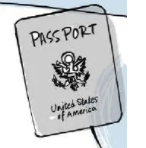
- Obtain a Transportation Workers Identification Credential (TWIC Card)
- Minimum age: 19 years old
- U.S. Citizenship

- Pass a DOT drug test unless enrolled in a USCG-approved random drug program for the last 185 days, and with no failure or refusal to participate in a chemical test for dangerous drugs.
- Adult CPR/Basic First Aid training
- Complete a USCG Original License Application Package
Finally, you must complete the Mariners Learning System Coast Guard approved 25/50 or 100 Ton Masters course.
Take a moment to review our one-minute e-guide on obtaining the Master's license.
What are the sea requirements for the Masters Inland/OUPV Inland?
A minimum of 360 days would be required to become Masters Inland/OUPV Inland licensed. Ninety (90) of those days must be done in the last three years. The Coast Guard calls that recency. You can self-certify your time on the water for your vessel.
Here is a link to a video that will clarify the sea service requirement.
What are the sea requirements for the Masters Inland/OUPV Near Coastal?
The sea service requirements for the Masters Inland/OUPV Near Coastal are at least 360 days of underway experience since age 16; 90 of those 360 days in the last three years and 90 360 days outside the boundary lines .
What are the sea requirements for the Masters Near Coastal?
A Masters Near Coastal License would require a minimum of 720 days of underway experience since age 16, 90 of those 720 days in the last three years, and 360 of those 720 days outside the boundary lines.

25/50/100 Ton Online Masters Captain’s License
Learn and study on your own time for your Master 25/50/100 Ton Captain's Licence.
Why take this course:
Get Your Professional Captains License For Vessels Ranging from 25-100 Gross Tons
The US Coast Guard Master 100 Gross Tons License allows its holder to captain any vessel up to 100 tons, regardless of whether or not it is inspected. Successful completion of our Master 100 GT course and exam satisfies all 100 Ton educational requirements and prepares you to obtain a US Coast Guard-issued master’s license ranging from 25 to 100 GT.
Operate Vessels Including:
- High-speed ferries
- Whale watching boats
- Charter boats carrying over six passengers
- Vessels of other sizes and capacities up to 100 tons
Learn and Test with Us!
Our 80 hours of curriculum prepare you for the USCG Exam – which you take with us – to achieve a completion certificate to complete your Merchant Marine Credential.
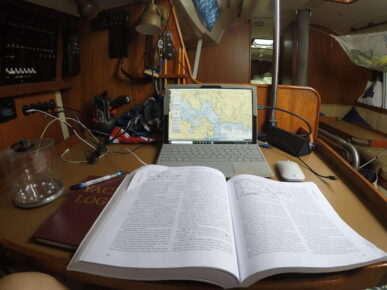
How our Online Courses work:
- Register by selecting the USCG Online Captain’s Course –> Master Online Course.
- Upon registering, you will receive course login directions and details via email.
- Order your course materials of Charts, Divider, Ruler, and Chapmans (list emailed upon checkout or can view be viewed here ).
- Participate in the entire course.
- Register for your Confident Captain Online Exam with us. If you need more help with exam preparation, email us at [email protected] for more information.
- Take and pass your exam with us online, on your own device.
- Receive your Course Completion Certificate.
- Fill out your USCG application using our student application guide.
- Send your application and certificate to the Coast Guard.
- Get your Captain’s License!
Course Pre-Requisites:
In order to participate in the course the following criteria must be met:
- The candidate must be 19 years of age to enroll in a Master’s course
- All candidates must have a firm understanding of the English language
Required Sea-time
- At least 360 days of sea time
- Each day of experience is defined by a minimum of 4 hours underway. The US Coast Guard makes exceptions for professional mariners working several shifts in one day and those who live aboard. Learn more about documenting your sea time.
Master Inland and Master Inland/OUPV Prerequisites
- 360 days of sea-time
- 90 of the 360 days must be within the last three years
- All experience must be obtained after the age of 16
Master Inland/Mate Near Coastal Prerequisites
- 90 of the 360 days must be within the last 3 years
- 180 of the 360 days must be outside the “boundary” line used for licensing purposes
Master Near Coastal (to 100NM offshore) Prerequisites
- 720 days of sea-time
- 90 of the 720 days must be within the last 3 years
- 360 of the 720 days must be outside the “boundary” line used for licensing purposes
Next step: Register for your USCG Exam with us
Schedule an online, completely remote exam which will be proctored by one of our staff.
Remote Exam:
Take the USCG Exam on your own time - from the ease of your home and on your own computer - using our online proctoring service.
Learn more about scheduling an Online Exam
Questions about Maritime Training? Give us a call at 425-778-1923.

- Testimonials
- Compass Crew
- ScholarSHIP
- Cancellation Policy
- 100 Ton Captain’s Licensing
- Able Seaman
- Advanced Firefighting
- Advanced Firefighting Revalidation
- Apprentice Mate (Steersman)
- Bridge Resource Management
- Basic Safety Training
- BT Refresher
- BT Revalidation
- Crisis Management & Human Behavior (other than Ro-Ro)
- Crowd Management
- Leadership & Managerial Skills
- PSC Lifeboatman
- PSC Lifeboatman Refresher
- Radar Recertification
- Radar Observer
- Tankerman PIC (DL)
- Upgrade Master 100 Tons to Master 200 Tons
- Vessel Personnel With Designated Security Duties
- Helpful Links
- Register Now

100 Ton Captain's Licensing
Take the exams with us! These are in-lieu-of-exam courses, which means you take the USCG exams at our school. This provides you the opportunity to relax and test in a familiar environment where you’ve been practicing. Successful completion of our course earns you a certificate that you take to the USCG.
Our Master License courses offer two weeks of classroom instruction by professional, licensed captains. We don’t simply “teach to the test”; our instructors provide the highest quality classroom instruction to give you the skills and knowledge needed to operate a vessel with confidence. Our staff will help guide you through the whole process, including documenting your sea time and assisting you in the application process.
100 Ton Master Inland/Near Coastal: This is the course for you if you're working as a deckhand, looking to make your way into the wheelhouse, or you own your own vessel and are interested in operating private charters. Our 100 Ton License course is 80 hours, runs two weeks (Monday-Friday 8 a.m. to 5 p.m.), and covers:
- Rules of the road
- Navigation and Chart Plotting
- Deck General
- Deck Safety & Environmental Protection
- Navigation General
Operator Uninspected Passenger Vessels (OUPV) Our 100 Ton Captain's course is also approved to meet the requirements for Operator Uninspected Passenger Vessels (OUPV), commonly known as a Six Pack License.
What does this mean to you? A Near Coastal License may be closer than you think. With only 90 days of Near Coastal sea service and at least 360 days total sea service, you should be eligible for an OUPV Near Coastal License. This license allows you to work as an operator of a small charter vessel off the coast. (The vessel must, however, not be inspected, be less than 100 GRT carrying a maximum of 6 passengers, and remain within 100NM of the U.S.)
Special Note: If you have been approved by the USCG for a 100 Ton Master/150 Ton Mate License, you will need to take the 200 Ton Master course to fulfill the exam requirements of the 150 Ton Mate rating.
Ready to train with us?
Course schedule.
To see our full schedule, click here.
Our Mission
Compass Courses' passion is to provide current and future seafarers with the knowledge, understanding, and proficiencies they need to be successful and safe through quality training on a reliable schedule.
Call now to enroll in one of our upcoming classes!
Train with us.
We teach classes everyday. Check our class schedule to find a course that works for you.
110 West Dayton Street, Suite 110 Edmonds, WA 98020
To sign up for a course, call 425-778-1923. You can also email us with any questions at [email protected].
Latest News
Come learn more about what we do here at Compass Courses!
Proficiency in Survival Craft at it’s finest!
A day in the life, "compass courses is the best maritime school in the united states. we are continually pleased at the outstanding students that graduate from their programs and become the sea’s next best".
Dr. Paul Martin
Get Training
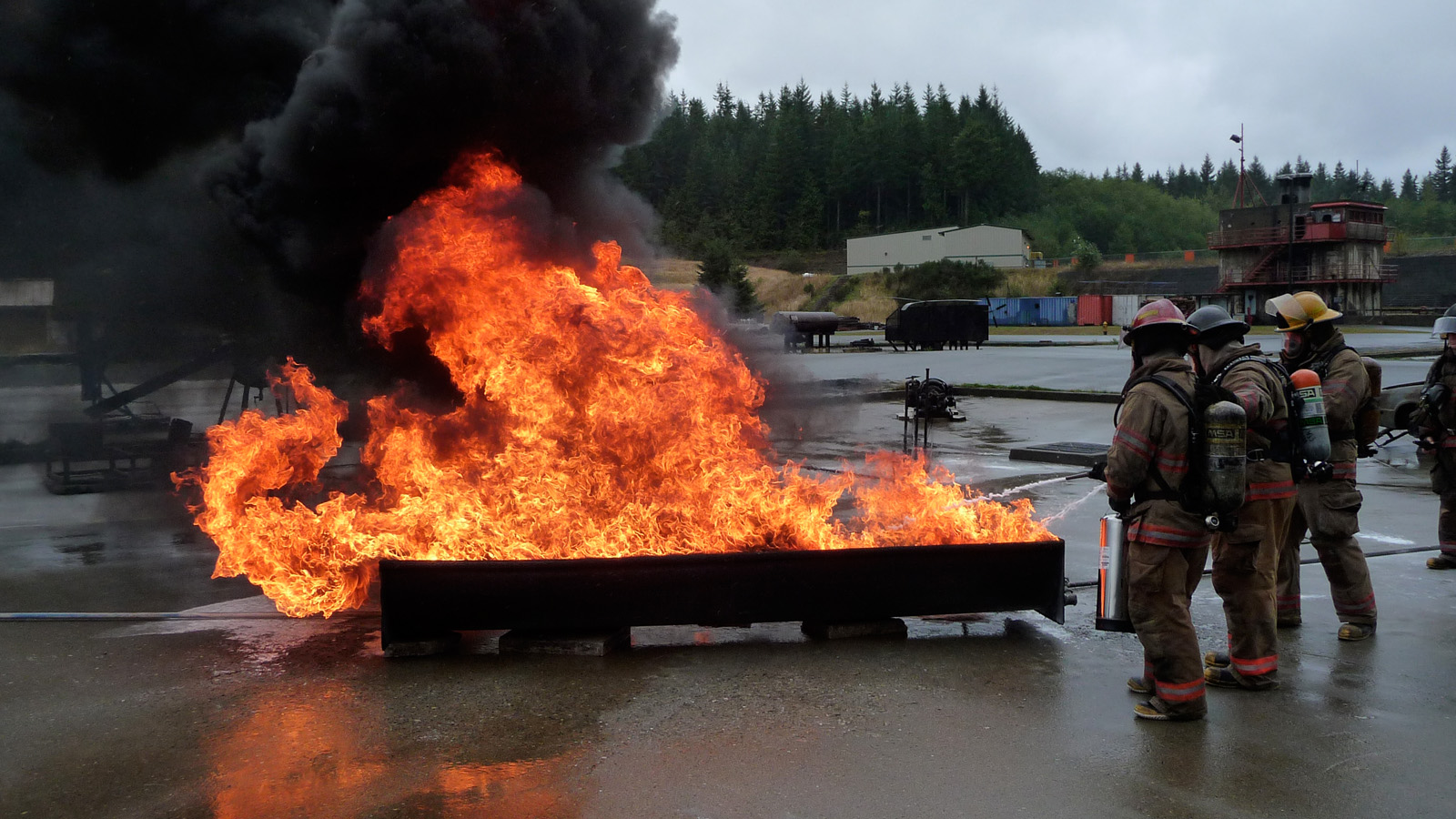
Our 5-day, 40-hour STCW Basic Safety Training course is typically held Monday-Friday. Completion of this course will satisfy the Basic Safety Training requirements for all licenses and endorsements.
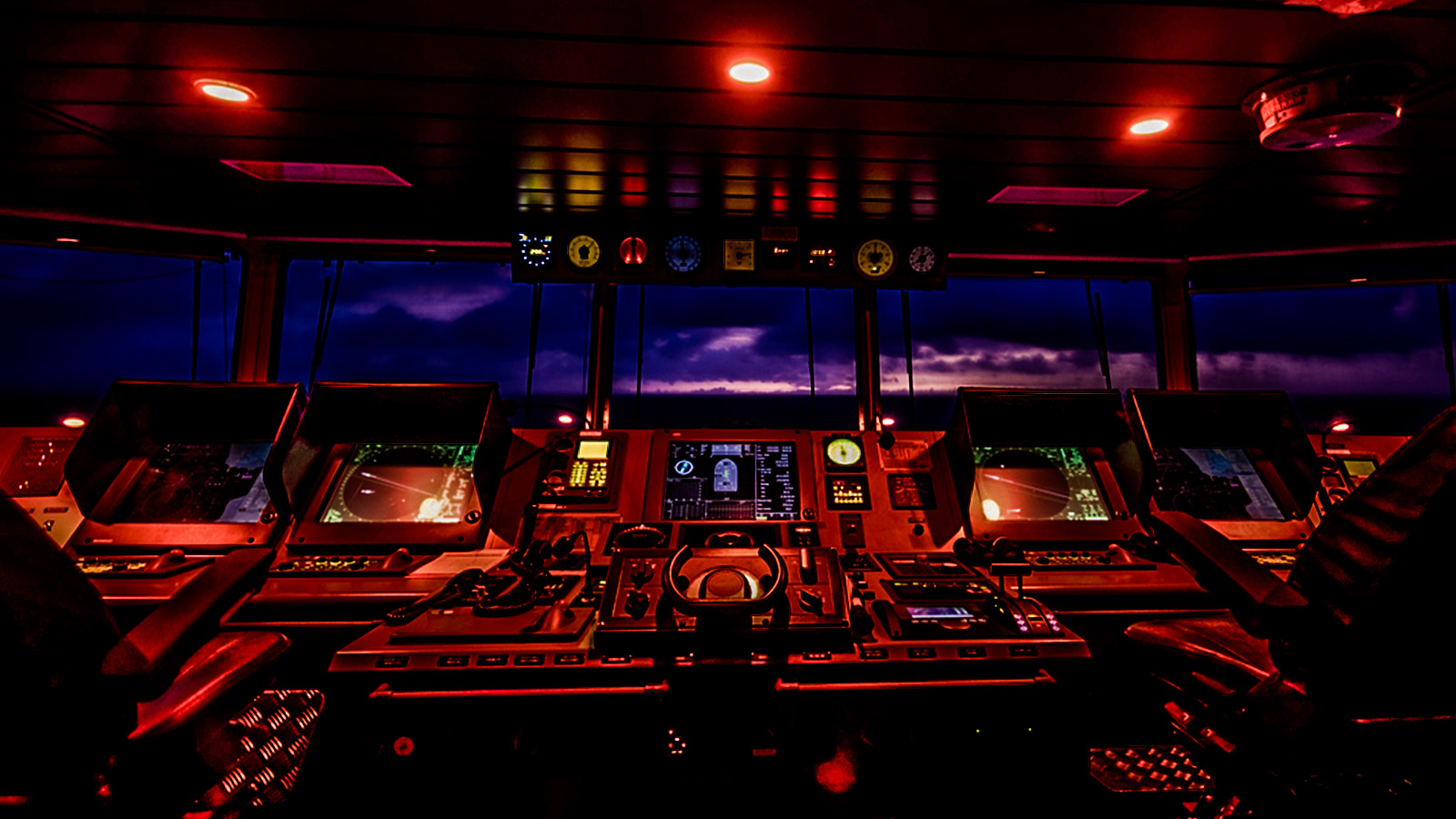
The 5-day ECDIS (Electronic Chart Display and Information System) course is designed to enhance the safety of navigation by providing the knowledge and skills necessary to fully utilize the ECDIS.
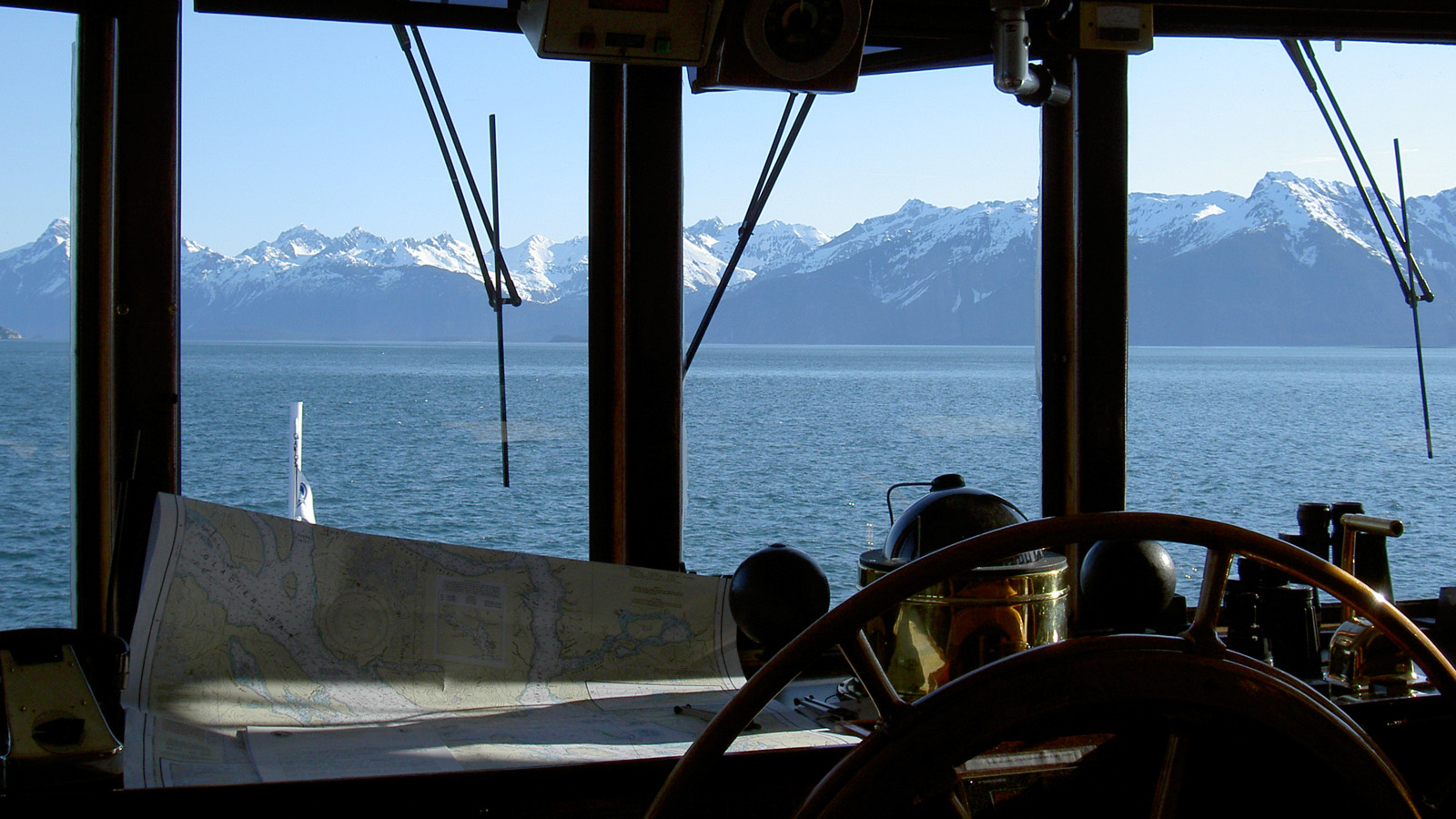
CAPTAIN'S LICENSE
Our in-lieu-of-exam courses make it possible for you to take the USCG exams at our school. Our Master License courses offer two weeks of classroom instruction by professional, licensed captains.

PSC/LIFEBOATMAN
We have a roller track gravity davit onsite! This 32-hour Proficiency in Survival Craft/Lifeboatman course teaches you the practical and procedural aspects of survival craft.
Come and train like you give a Damn.
- Skip to primary navigation
- Skip to main content
- Skip to footer

(866) 300-5984 [email protected]
What are the Requirements for Earning a Captain’s License ?
U.s. coast guard requirements for national oupv or master up to 100 tons.
A Captain’s License is required to operate a commercial vessel or to take paying passengers out on your vessel. Understanding the Captain’s License Requirements is important prior to taking a captain’s license course . The prerequisites should be reviewed before applying for any U.S. Coast Guard credential. This is advised so you don’t spend your time and money pursuing a license that you don’t qualify for. For helpful credential information and application packets, and official forms click here . For Maritime Institute’s fee-based credential services, click here to get more info.
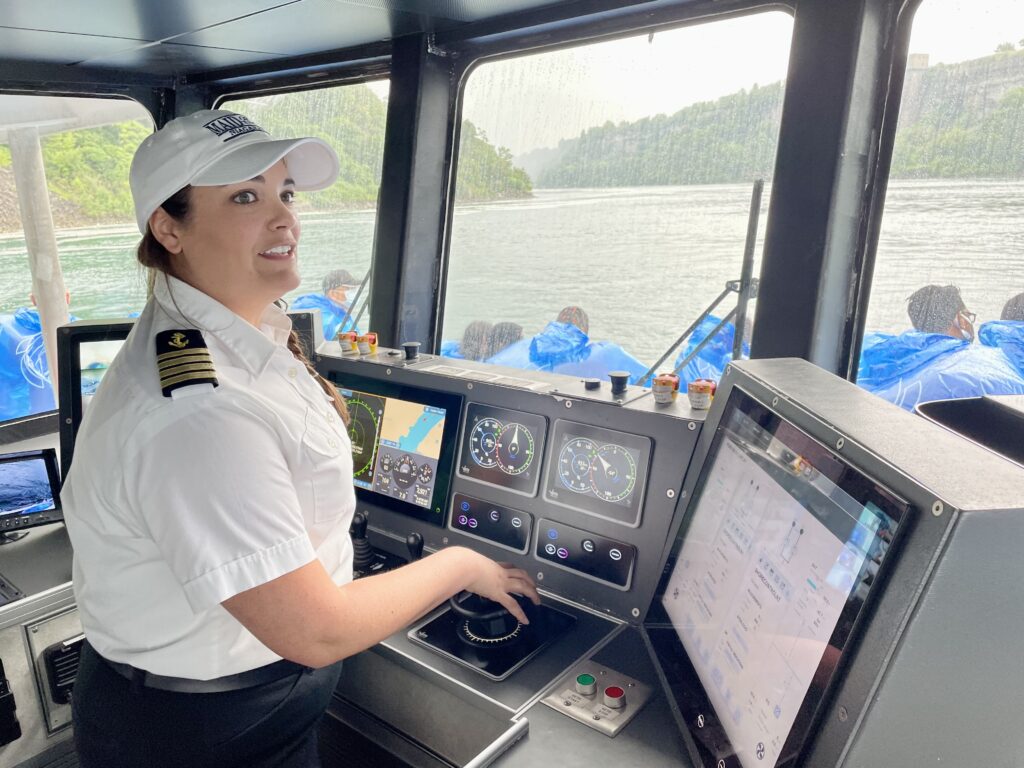
Prerequisites for Operator of Uninspected Passenger Vessels (OUPV/”6-Pack”)
The National OUPV license is limited to uninspected vessels, of less than 100 gross tons, operating on U.S. domestic waters ONLY. Also limited to carrying six or less paying passengers. You must meet all of the requirements established by the USCG National Maritime Center in order to apply for this license. The USCG checklist of requirements is located here on the National Maritime Center website: https://www.dco.uscg.mil/nmc/checklist/ . Under National Officer Endorsements for Deck, click on National OUPV Less Than 100 GRT.
Important sea service requirements for OUPV:
- Must be at least 18 years old.
- Must be able to document 360 days of experience on a vessel, of which at least 90 days must be on Near Coastal/Ocean waters otherwise license will be limited to Inland Waters ONLY. ( See: What Counts as Sea Service )
- 90 days of sea service must be within the last 3 years of when you apply.
- 90 days of sea service must be on Ocean or Near Coastal waters or otherwise the license will be limited to Inland Waters only.
- If you are not a U.S. Citizen, you can apply for this license but it will be limited tonnage and restricted to undocumented vessels.
Prerequisites for Master up to 100 Tons on Inland Waters/Great Lakes
With a Master license you may operate inspected/commercial vessels and also take more than six paying passengers. You must meet all of the requirements established by the USCG National Maritime Center in order to apply for this license. The USCG checklist of requirements is located here on the National Maritime Center website: https://www.dco.uscg.mil/nmc/checklist/ . Under National Officer Endorsements for Deck, click on National Master 100 GL and Inland.
Important sea service requirements for Master Inland/GL:
- Must be at least 19 years old.
- Must be able to document 360 days of experience on a vessel. ( See: What Counts as Sea Service )
- The tonnage of the license (25 Ton, 50 Ton, or 100 Ton) that you get, is determined by your experience. See USCG checklist in the paragraph above for the specific tonnage qualifications .
If you plan on operating an inspected sailing vessel, you must have a sailing endorsement along with the Master Inland/GL license. The required amount of sea service for a sailing endorsement on a Master Inland/GL license is: 180 days on sail or auxiliary sail vessels.
Prerequisites for Master up to 100 Tons on Near Coastal Waters
With a Master license you may operate inspected/commercial vessels and also take more than six paying passengers. You must meet all of the requirements established by the USCG National Maritime Center in order to apply for this license. The USCG checklist of requirements is located here on the National Maritime Center website: https://www.dco.uscg.mil/nmc/checklist/ . Under National Officer Endorsements for Deck, click on National Master 100NC .
- Must be able to document 720 days of experience on a vessel, of which at least 360 days must be on Near Coastal/Ocean waters. ( See: What Counts as Sea Service )
If you plan on operating an inspected sailing vessel, you must have a sailing endorsement along with the Master Near Coastal license. The required amount of sea service for a sailing endorsement on a Master NC license is: 360 days on sail or auxiliary sail vessels.
- Cookie Policy
- Privacy Policy
- Terms of Use
Sign Up For Our E-Newsletter!
Maritime Institute Online Course Portal Book Examination - Everett, WA Book Examination - San Diego, CA
Privacy Overview
Log in to maritime institute.
Which USCG Captain's License Should You Choose?
OUPV or Master License? Your choice depends on vessel size and passenger count. Learn the requirements and how to upgrade later.
The first step you need to take to get your captain’s license is to decide which type of license you’re going to pursue.
There are two main types of Coast Guard licenses:
License Type #1 - 25 ton, 50 ton, or 100 ton Master License
License Type #2 - Operator of Uninspected Passenger Vessels (OUPV or Six Pack)
The type of license you choose depends on the size and type of vessel and the number of passengers aboard. You can always upgrade your captain’s license and add endorsements along the way.

OUPV/Six-Pack
The OUPV/Six-Pack license is the USCG license that many recreational boaters choose. It’s called the six-pack license because it allows you to take up to six paying passengers and crew members. This allows you to do small fishing trips, sightseeing tours, dive boats, or sail boats.
The OUPV license is also limited to vessels that are 100 gross tons (about 80 feet long).
Many boaters will get their OUPV license even if they have no intention of doing commercial boating. You don’t need to be licensed by the Coast Guard to use your personal boat, unless you’re taking paying customers out on the water.
Getting your license is still valuable because you’ll brush up on your navigation and safety skills. Plus, having your license gives you the option to captain in a commercial setting.
The OUPV qualifies you to captain uninspected vessels. USCG uninspected vessels can carry up to six passengers and aren’t required to be inspected by the Coast Guard. The uninspected vessel must comply with minimal federal standards for safety, navigation, and pollution prevention .
Inland, Great Lakes, and Near Coastal OUPV
There are three types of OUPV licenses that dictate the bodies of water you can operate on commercially.
The Inland OUPV license allows you to captain on U.S. Inland waters . This includes bays, rivers, and lakes (excluding the Great Lakes).
The Near Coastal license allows you to operate on Inland waters and Near Coastal, which is typically up to 100 miles offshore.
The third license type is Near Coastal with Great Lakes. This license allows you to operate on Inland, Near Coastal, and the Great Lakes .
OUPV license requirements
To qualify for your OUPV license, you’ll need to have 360 days of documented sea days. At least 90 of those days must be within the past 3 years. To attain the Great Lakes or Near Coastal license, you’ll need 90+ sea days on the respective waters.
The Small Vessel Sea Service Form CG-719S is used to record your sea days—the number of days that you were on the water (for 4+ hours in a day) in any given month and year.
Once you have the required sea time, you’ll need to:
- Be at least 18 years old
- Get your TWIC card
- Be a U.S. citizen (or show permanent residency)
- Have a valid First Aid/CPR Card
- Pass a basic physical exam
- Pass a drug test
- Complete a USCG-approved course
Read more about How to Get Your OUPV License
25/50/100 Master
The Master Captain’s License is required to captain any USCG inspected vessel, or vessels carrying 7 or more paying passengers. Larger tour boats, finishing boats, sailboats, and water taxis with more than 6 paying passengers on board require a Master License.
This license also allows you to captain uninspected vessels with fewer passengers. You don’t need to get a lower level license prior to this, or start at the lowest level. Your first license can be a 100 GT Master.
Similarly to the six-pack license, there are different Master licenses based on the size of the vessel, and the water you’re on.
To start, there are 25, 50, and 100-ton licenses. The 25-ton Master license qualifies you to captain vessels up to 25 tons. The 50-ton lets you captain 50-ton vessels. And the 100-ton lets you captain 100-ton vessels.
The license you qualify for depends on your documented sea days and the tonnage of the vessels you were serving on.
25 Ton Master = You have a minimum of 360 days on vessels less than 17 gross tons (GRT).
50 Ton Master = You have 180 days on vessels 26 GRT or larger, or 360 days on vessels 17 GRT or larger.
100 Ton Master = You have 180 days on vessels 51 GRT or larger, or 360 days on vessels 34 GRT or larger.
The Coast Guard will decide which license you’re qualified for based on your documented sea days on your license application. And if you get more sea time on larger vessels, you can always apply for an upgrade, so it’s best to focus on getting the license for the work you’re currently doing.
It only takes 90 days of additional sea service to remove tonnage limitations. For example, after 90 days of sea service, you can apply to upgrade from 50 Ton Master to 100-Ton Master. Note: The Coast Guard won’t automatically update this for you—you’ll need to apply for it.
Just like the OUPV, there are Great Lakes, Inland, and Near Coastal Master Licenses, and your qualification depends on the location of your sea days.
How big is a 25/50/100 Ton vessel?
A 25 GRT vessel doesn’t mean the vessel weighs 25 tons. There are specific formulas to measure GRT outlined in the Coast Guard’s Tonnage Guide .
To give you a general idea of the different vessel sizes:
- A 25-ton vessel can be 40-60 feet depending on how it's built.
- A 50-ton vessel can be 60-70 feet depending on the type of vessel and material
- A 100-ton vessel can be upwards of 200 feet, depending on its construction and uses
25/50/100 Master general requirements
In addition to the required sea days, there are general requirements for your Master License that are similar to the OUPV requirements. These include age, experience, character, physical health, citizenship, approved training, professional competence, a drug test, and more, including:
- Obtaining your TWIC card
- You must demonstrate an ability to speak and understand English.
- You must have at least 90 days of required service on vessels of appropriate tonnage or horsepower within the past 3 years of your application date.
- You must be at least 19 years old (21+ for ocean-going vessels).
- You must have had a physical done within the past 12 months.
- You must get a background check done.
- You must have a valid CPR and First Aid certificate .
- You must complete the appropriate USCG-approved course.
Master license endorsements
In addition to the USCG Master License, there are additional endorsements that qualify you for activities. These include the Assistance Towing Endorsement and Auxiliary Sailing Endorsement.
To operate an inspected (more than six paying passengers) sailing vessel, you need a U.S. Coast Guard auxiliary sail license endorsement attached to your Master License.
You’ll need at least 180 sea days on a sail or auxiliary sail vessel for a Sailing Endorsement onto a Master Inland/Great Lakes Captain’s License, and 360 sea days on a sail or auxiliary sail vessel to add the endorsement onto a Master Near Coastal License. You also need to pass a USCG-approved auxiliary sail course.
Both the OUPV and Master License can be endorsed for commercial assistance towing of disabled vessels—within the scope of the license.
No documented experience is required for the towing endorsement. You must pass a written examination or complete a Coast Guard-approved course demonstrating your knowledge of towing safety, equipment, and procedures.
The validity of the endorsements are the same as your license or MMC on which they’re included, and will be renewed with your MMC.

We hope this made your life a little easier and if you have other questions the MM-SEAS team is always here to help!
MM-SEAS is free to use on your own and if you need some more personalized help you can upgrade to MM-SEAS Pro inside of the site.
No matter what, when you are ready to submit your application, you can choose to have the MM-SEAS staff create a perfect application, handle the USCG application fees and work with the USCG on your behalf to resolve any issues for a flat fee of $349 or you can choose to submit on your own.
Pro MM-SEAS members get access to unlimited live 1 on 1 calls with one of our USCG Licensing Specialists. We've found that answering questions live with screen sharing in a video call makes both of our lives easier. Pro MM-SEAS members can access these features inside of MM-SEAS under License Guidance.
Need to renew, upgrade or get your first USCG license? We're here to help.
About the author.

Sam Mckay is a NOAA Corps Veteran working on his PhD in Nuclear Fusion
.webp)
What Size Of Boat Is 100 Tons?

May 3, 2023
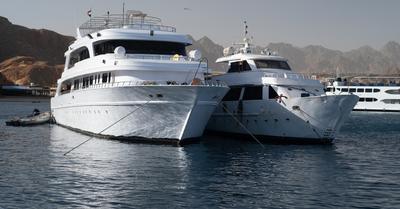
Key Takeaways
- A 100-ton boat has a displacement of 224,000 pounds.
- Ships this size will range from 65 to 85 feet in length.
- The largest freight boats are Triple-E class and weigh around 200,000 tons.
- A 100-ton captain needs a USCG Master License of the appropriate tonnage.
- Displacement is the weight of the water pushed aside by a floating ship.
The dimensions of a 100-ton boat are impressive, from yachts to commercial vessels. Learn how weight relates to size and licensing for operating these ships.
A 100-ton boat, with a displacement of 224,000 pounds, ranges from around 65 to 85 feet in length. These include yachts, commercial trawlers, and sailing vessels. Operating a 100-ton boat comes with licensure rules, such as obtaining a USCG Master License.
With a passion for all things nautical, we've built an understanding of boats and their intricacies. Our knowledge enables us to provide you with engaging information for all boating enthusiasts, ensuring you're well-equipped for your next adventure on the water.
Table of contents
100-ton boats: size, dimensions, licenses, and more.
Most of us have a basic understanding of what a 100-ton boat entails; let's delve deeper into how the weight of a ship can relate to its length, width, or height.
While the correlation isn't exact, some general rules of thumb can help you visualize these maritime giants.
We'll also take a look at one of the most important metrics when it comes to large ships: displacement.
The Dimensions of a 100-Ton Boat
To give you a rough idea, a 100-ton boat could range from 65 to 85 feet long.
The width, also known as the beam, can vary between 16 to 25 feet, depending on the boat's design and purpose.
The height, or draft, is the distance between the waterline and the bottom of the hull.
The draft can span anywhere from 5 to 10 feet or even more for a vessel of this size.
These are not your average weekend sailboats; they're more often multi-deck yachts, whale-watching boats, or large commercial ships/ferry boats.
A standard dive boat can weigh over 100 tons, too.
What is a 100-Ton Boat's Displacement?
A 100-ton boat has a displacement of a staggering 224,000 pounds!
To truly appreciate the size of a 100 gross ton boat, we need to first understand the concept of displacement.
Displacement is simply the weight of water that a vessel pushes aside when it's floating.
It's like how the water level in your tub rises when you get in for a bath.
In the world of boating, it's measured in long tons, where one long ton equals 2,240 pounds.
Internal volume can impact both the amount of water displaced and external size.
Why Does the Displacement of a Ship Matter?
The displacement of huge ships matters for several reasons, primarily related to stability, performance, and safety.
- It determines the ship's buoyancy, ensuring that the vessel remains afloat and stable in various sea conditions.
- Displacement affects a ship's performance in several ways, including speed, fuel efficiency, and maneuverability.
- Understanding displacement is crucial for adhering to safety regulations, as it allows for proper load management and prevents overloading, which could lead to capsizing or structural damage.
In essence, the displacement of a huge ship is a critical factor in ensuring its safe, efficient, and reliable operation at sea.
Licenses and Regulations Regarding 100-Ton Boats and Captains
When it comes to owning, operating, or even just stepping foot on a 100-ton boat, there are certain licensure and regulatory aspects to consider.
The weight and size of a vessel dictate the type of license and qualifications required to operate it legally.
In the United States, for example, boat operators must adhere to the guidelines set forth by the United States Coast Guard (USCG approved).
The USCG issues Merchant Mariner Credentials (MMC) for professional mariners, which include various licenses and endorsements for a captain’s license based on size and type.
What Is a USCG-Approved 100-Ton Captain, and What License Do They Need?
For a 100-ton boat, an operator would generally require a USCG Masters License, specifically a license for vessels up to 100 gross tons.
This license allows the holder to operate inspected vessels carrying more than six passengers for hire, as well as uninspected vessels.
To obtain this license, an applicant must meet specific sea service time requirements, take an approved course, pass a written examination, and undergo a background check and drug test to be eligible.
Master inland and ocean material differs.
What Is the Highest Boat License? (To Operate Inspected Vessels)
The highest level license recognized by the USCG is a 1600-ton Master License, allowing an individual to operate vessels over 500 gross tons.
Check out the Coast Guard and National Maritime Center's official Merchant Mariner Credentialling page for more information.
NMC credentials are serious business and not meant for regular hobbyists or non-professional sailors.
Other Regulations
Apart from operator licensure, it's also important to consider other regulatory aspects associated with owning and operating a 100-ton boat.
These may include compliance with safety and environmental regulations, such as the International Convention for the Safety of Life at Sea (SOLAS), which sets minimum standards regarding construction, and the International Convention for the Prevention of Pollution from Ships (MARPOL).
A 100-ton boat may also be subject to local, regional, and international registration and inspection requirements, depending on where it is being operated.
How Long Does a Boat Have to Be to Be Yacht Certified?
The classification of a boat as a yacht is not strictly determined by its length; rather, it's based on a combination of factors, including its design, purpose, and amenities.
Yachts are widely considered to be recreational vessels that prioritize luxury, comfort, and style. However, there is a commonly accepted threshold when it comes to size.
Most industry experts consider a boat to be a yacht when it reaches a length of around 30 to 40 feet or more.
Boats in this size range typically offer more advanced features and accommodations than smaller vessels, which aligns with the expectation of luxury and comfort associated with yachts.
It's worth noting that as a boat's size increases, so does the level of luxury and sophistication, eventually leading to the classification of "superyacht" and "megayacht" for vessels exceeding 100 and 200 feet in length, respectively.
How Many Tons is a Freight Boat?
Freight boats can weigh anywhere between 5,000 tons to around 200,000 tons or more.
These maritime workhorses are the unsung heroes of global trade.
From small coastal vessels to gargantuan container ships, the range of freight boats is vast.
This is why their gross tonnage can vary significantly.
At the smaller end of the spectrum, you'll find coastal freighters or feeder vessels, which typically weigh between 5,000 to 15,000 tons.
They transport goods between nearby ports or serve as a link between smaller harbors and larger shipping routes.
Massive container ships, bulk carriers, and oil tankers can weigh anywhere from 50,000 to over 200,000 tons, with some even pushing beyond 300,000 tons!
These ships are designed to carry massive amounts of cargo, from consumer goods to raw materials.
What Is the Largest Freight Boat?
To put things into perspective, let's consider the largest container ships currently in operation, the Triple-E class vessels.
With a tonnage of around 200,000 tons and the capacity to carry up to 18,000 twenty-foot equivalent units (TEUs), these ships are a testament to human ingenuity.

What's The Fastest Boat That Has Crossed the Atlantic Ocean?

Is Motion Sickness Worse In The Front Or Back Of A Boat?

Sailing As A Sport: An Overview Of Its History And Evolution

How Do Boats Float?
This article may contain affiliate links where we earn a commission from qualifying purchases. The images and content on this page may be created by, or with the assistance of, artificial intelligence, and should be used for entertainment and informational purposes only.
About THE AUTHOR
Brian Samson
I have a deep love of houseboating and the life-changing experiences houseboating has brought into my life. I’ve been going to Lake Powell on our family’s houseboat for over 30 years and have made many great memories, first as a child and now as a parent. My family has a passion for helping others have similar fun, safe experiences on their houseboat.
Trending Now

How Fast Does A Shipping Boat Go?

Mastering Boat Steering Techniques: From Rudder to Tiller

Is A Ferry A Type Of Boat? (Everything You Need To Know)

What Is The Gunwale On A Boat?
After spending over 30 years on houseboats, the memories and knowledge we've gained will never fade. Learn from our experiences here on LakeWizard. You can read more about us and our team, here .
©2024 LakeWizard. All rights reserved.
You can email us at [email protected]
LakeWizard.com is a participant in the Amazon Services LLC Associates Program, an affiliate advertising program designed to provide a means for sites to earn advertising fees by advertising and linking to Amazon. This site also participates in other affiliate programs including but not limited to ShareASale, CJ, and ClickBank, and is compensated for referring traffic and business to these companies.

- Home /
- Blog /
- Captain License
- / USCG Captain’s License: Ultimate Guide
USCG Captain’s License: Ultimate Guide
When do you need a captain’s license.
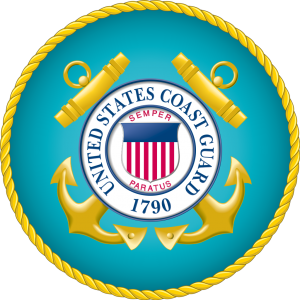
Sometimes, maritime training instructors also need a captain’s license. Another reason you might need a captain’s license is for insurance purposes. Some insurance companies require that the boat has a licensed captain onboard, while others offer discounted rates.
To carry up to six paying passengers on a vessel of up to 100 gross tons you need an Operator of Uninspected Passenger Vessels (OUPV) Captain License – also called a six-pack captain’s license. The 6-pack captain’s license requirements include that you are at least 18 years old. You do not have to be a U.S. citizen, but you have to provide proof of permanent U.S. residency.
If you are intending to carry more than six paying passengers you need a Master Captain’s License – the highest level captain’s license issued by the USCG. The master captain’s license requirements include that you are at least 19 years old and a U.S. citizen.
How to become a boat captain
1. captains license sea time requirements.
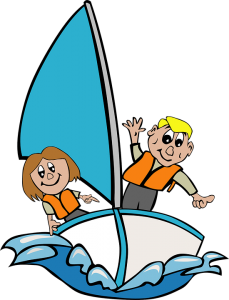
Sea service time can be counted from your 16 th birthday. It must be documented on the Small Vessel Sea Service Form , or detailed in a letter, and signed off by the owner/operator/master of the vessel on which you conducted the service. If you did your sea service on more than one vessel, a separate form must be used for each vessel. If you are the owner of the vessel you must present proof of ownership.
Eight hours underway (not moored or anchored) in a 24-hour period counts as one day of sea service on vessels over 100 gross tons. For vessels less than 100 gross tons, no less than four hours underway counts as a day. It is important to identify the waters (inland, great lakes or near coastal) that the vessel was operating on as this will determine the type of captain’s license you qualify for.
USCG captain’s licenses are issued to operate vessels either inland, on great lakes or near coastal. To become a boat captain on great lakes you need at least 90 days sea service time on great lakes. The sea service requirements for operating a vessel near the coast depends on whether you are applying for an OUPV Captain’s License or a Master Captain’s License .
The gross tons of the vessel is also important to document – especially when applying for a Master Captain’s License . Tonnage refers to the volume of the boat and not the weight. If the tonnage of the boat is unknown (check the vessel’s documentation), the length, width and depth can be filled in on the Small Vessel Sea Service Form in order for the USCG to calculate the tonnage. The registration/identification number of the vessel must also be provided or the USCG will not accept the sea service form.

You will be quizzed on the following sections:
- Rules of the Road (you need to correctly answer 90% of 30 questions)
- Navigation General (you need to correctly answer 70% of 30 questions)
- Chart Navigation (you need to correctly answer 70% of 10 questions)
- Deck General and Safety (you need to correctly answer 70% of 60 questions)
- For a master captain’s license : Master 25/50/100 Ton (you need to correctly answer 70% of 70 questions)
You can find up-to-date captain’s license practice test questions, released directly from the U.S. Coast Guard, at USCGQ.com .
3. Additional requirements
- Pass a physical
- Pass a drug test
- Obtain a CPR and basic first aid card
- Request a criminal background and driving record check by applying for a Transportation Workers Identification Credential (TWIC) card at the Department of Homeland Security.
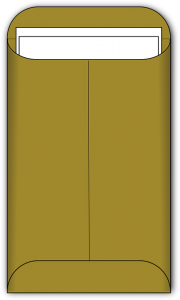
- Merchant Mariner Credential (MMC) Application Form ( CG-719B )
- Copy of Certificate of Training
- Copy of your CPR & First aid card (front and back)
- TWIC application receipt
- Conviction Disclosure Statement (if convicted of anything) ( CG-719C )
- Small Vessel Sea Service Form ( CG-719S )
- Medical Form ( CG-719K )
- DOT/USCG Drug Testing Form ( CG-719P )
- Receipt of payment (you can pay applicable fees at Pay.gov )
You must apply at your USCG regional exam center in person, by mail or electronically. Your application must be accompanied by photo identification.
How much does it cost to get a U.S. Coast Guard captain license?

You need to pay the USCG for the issuance of the Merchant Mariner Credential ($45) and for processing the license application ($100). If you are undertaking the examination at a USCG exam center (and not with an approved course provider) you also need to pay the examination fee ($95).
But it doesn’t end there. You need to pay the TWIC enrollment fee; for the physical exam and drug screening; and for First Aid/CPR Training.
A good tip is to submit your application to the USCG before enrolling in a course. Once the application is approved by the USCG, in terms of the required documentation, you will receive a notification indicating “Approval to Test (ATT)”. That way you can be sure your application will be approved before paying course tuition fees.
Also see USCG captain’s license renewal requirements, upgrade requirements and endorsements .
USCG License Upgrade
USCG License Renewal
USCG Captain’s License Endorsements
Merchant Mariner Credential (MMC)
USCG Master Captain’s License
USCG OUPV (Six-Pack) Captain’s License
Click Here to Leave a Comment Below
Leave a Comment:

How to Get Your Captain’s License –A Step-by-Step Guide
From captain requirements to the coast guard application process – how to navigate the process of becoming an official boat captain.
Like all other areas of professional endeavor, getting a Captain’s license is an essential and non-trivial process. Despite the years between my earliest thoughts on having one and actually applying…or perhaps because of that time…I am quite proud to call myself Captain !
From the time I was Quartermaster aboard the Chesapeake Lightship back when she was berthed in Washington, DC, I had wanted to get my Captain’s license. We in her crew had plenty of sea time. The late Capt. Joe Murray, John Hart, and particularly Chris Krusa saw to it that each of us developed our skills and knowledge beyond the minimum that we needed for our jobs. We met collectively with a Coast Guard officer to explore the options for us all getting licensed; however, the wind was taken out of our sails so to speak when he told us that since most of us were not 18, we were not entitled to take the written exam.
I left that session crestfallen but I put it all behind me as I moved on with a career in research physics. Later, I learned that what the officer SHOULD have said is that if we had just waited (a few months) until we turned 18, we could have taken the exams. Years later, my problem was that I could not meet the requirement to have 90 days of sea time in the last 3 years. My employer would have more than frowned on my having been gone so often. And all of us had not even bothered to ask for sea service forms or letters to document our time on the Chesapeake.
Fast forward 34 years and serendipitous events led to my being able to get signed sea service forms for my time on the Lightship. Shortly thereafter, I became a boat owner WITH vacation time afforded to a very senior engineer in the company.
Long story short, I am Capt. Rob Chichester – 200 Ton Master with Auxiliary Sail and Assistance Towing Endorsements.
Navigating the path to a Captain’s license can be full of the brambles of regulations, forms, and oddly worded requirements. In this article, I will try to clarify the process and help interested skippers decide what type of license, scope, and tonnage they should pursue. Then I will discuss the application process and all the elements needed to assemble a successful license application package.
More Resources: If you would like a one-on-one consultation to have your specific questions answered on this topic or others related to boating, please sign up for 30 minute video consultation with me!
The Basics of a Captain’s License
A first time applicant will need to decide while type of license to pursue. There are two types available to one applying for a new license.
- You may apply for a license to be an Operator of Uninspected Passenger Vessel (OUPV) or the more familiar “Six Pack” license. It is so called because the holder of this license is limited to carrying no more than 6 paying passengers on any vessel within his tonnage rating regardless of the maximum capacity rating for the vessel.
- The other option is a Master’s license which allows you to carry up to the maximum number of passengers indicated for the vessel in question. Whereas a Master’s license requires US Citizenship, an OUPV license holder can be non-US citizen. Clearly holding a Master’s license offers more opportunities; however as I will explain later, the knowledge requirements are appropriately greater.
The scope or route for one’s license is the waters in which you are authorized to function in your licensed capacity.
There are effectively three such areas defined:
- The first is Inland which covers all inland rivers and bays not otherwise outside the demarcation line for the high seas. This may also include portions of the Great Lakes up to the International boundary line. (I will not explicitly discuss the Great Lakes or Western Rivers in this article but those waters are also covered by an Inland scope with a specific endorsement for each.)
- The second route is near-coastal which means ocean waters not more than 200 miles offshore. By extension, a near-coastal route endorsement includes inland waters as well.
- Lastly, Oceans refers to all waters seaward of the Boundary Lines as described in 46 Code of Federal Regulations (CFR) Part 7.
Tonnage rating is determined by the size vessels upon which an applicant has served. The tonnage is not simply the weight or displacement of a given vessel. It is not how much stuff you had loaded on a boat. It is a calculation of theoretical displacement if the complete available interior volume of a ship were filled with material of density 1 (i.e., water).
There are formulas available to estimate that based on the dimensions and type of boat. The calculations are necessarily different for a sailboat and a power boat. On a very rough order of magnitude, a 100 Ton powerboat would be about 80 feet long and a 100 Ton sailboat would be about 100 feet long. The tonnage rating is a not to exceed limitation.
One need not necessarily serve on a 50 ton or 100 ton vessel to earn the equivalent tonnage rating (see the table below for specifics on that). One cannot be granted more than a 100 Ton rating on an initial license because higher tonnage requires that one has served in a licensed capacity before applying for the higher tonnage. When I renewed my license in November, I applied for a 200 Ton rating which was granted conditional to my successfully passing the mandated written test. By the time you read this, I expect to have taken that exam.
Tonnage and route are determined by one’s documented experience. While you may apply for a 100 ton rating, you may only be granted 50 tons (or less) if your experience does not justify the higher rating. Additionally, the greater the scope, the more sea time is required to qualify for the rating.
For example, while an Inland scope needs 360 days of total sea time with 90 days in the last 3 years, a near-coastal scope requires 720 days and again the 90-day recency requirement. The take-away here is that experience is a big determinant and should NOT be discounted in any way. Note that there is no path to being granted an Ocean scope except by being a licensed mate or master for at least 2 years with documented service on those waters. That is, it is impossible to apply for an Oceans scope on a first application.
It should be noted that an OUPV license is automatically issued with a 100 Ton rating. As coarse as this may sound, the reason is that it is assumed that with an OUPV license, the most damage one can do is to 6 people. Therefore, there is no particular benefit to issuing OUPV with varying tonnage ratings. New Master’s licenses are issued with ratings of 25, 50, or 100 tons. Discussions of ratings over 100 tons or Ocean routes are beyond the scope of this article. You may contact the author if you wish more information on those specific topics.
The table below is a guide to determining for what rating one may qualify.
Your Sea Time Experience
For a Near Coastal route, ideally, all of your time will be on Near-Coastal waters; however, you are allowed to substitute up to half of the 720 days required minimum with Inland route service. For the purposes of documenting sea time for a Near Coastal route, any time served beyond the 3-mile limit counts for that purpose. So if you charter in the Caribbean or crew on an offshore fishing trip, that time counts.
Just to be clear, sea time is not counted unless you are a working member of the crew of the vessel named on the sea service form. That is to say, just being a passenger is not sufficient.
To keep things on the up and up, the applicant is required to get the signature of the owner, manager, or master of the vessel on the sea service form. If the applicant owns the identified vessel, proof of ownership must accompany the form. Proof might be a Bill of Sale, vessel document, or a state registration.
Sea time is not counted unless you spend at least 4 hours of a given day underway . Being onboard the boat at the dock swabbing the decks does not count. Time underway is counted whether it is in route or adrift. Being anchored or moored also does not count. It can be tedious to collect and collate all of your sea service forms, especially after the fact. My best advice is even if you are only thinking about getting a license, keep blank sea service forms with you for the vessel operator to sign at the end of a trip. Note that the forms are not per trip but per vessel. There is room to document up to 5 years of sea time on any given vessel. There is room for five years of data because your license will be up for renewal every 5 years .
Technically, vessels over 200 gross tons now require a Service Letter from the employer or vessel manager. However at the time I applied for my original license, I submitted my time on the Chesapeake Lightship on a Sea Service form (CG-719S). That form was accepted for that as well as again when I renewed and requested an upgrade to 200 Tons. I may have been grandfathered so new applicants should verify their individual situations with the National Maritime Center .
Health and Medical
To be a Captain, one must be in good health and of reasonable physical ability. The Medical form ( CG-719K ) is the most extensive form one will need to complete. It also requires the signature of a licensed physician. Unlike an FAA pilot’s license, the physician need not be approved by the US Coast Guard. Your family doctor is acceptable.
For my part, I completed as much of the form as was reasonable. I then FAXed the form ahead of my annual physical so that the doctor could review what was needed and to be prepared to sign off on it. The only extra thing the doctor had to do was conduct color vision and standard wall chart vision test. Your vision need not be perfect without glasses but if that is the case, you should expect a requirement to be written on your license requiring corrective lenses to be used and a spare pair to be available when on duty. If your medical form is accepted, you will be issued a separate medical form which is to be kept with your Merchant Mariner Credential. There is a pocket on the back cover to hold it and the required Transport Worker’s Identification Card ( TWIC ). The TWIC will be addressed below.
Another form to be completed, this time by an authorized physician, is the DOT five-panel drug test . An applicant must submit proof of drug testing with no findings as determined by an authorized physician. Also be aware that to work aboard any vessel in any compensated capacity, you must have proof of participation in a drug test program, whether it be one in which you elect to participate as an individual or one required by your marine employer. Such proof is to be carried with you at all times just as your license and medical certificate must be. It is generally in the form of a letter attesting to your compliance and passing a test within 12 months of the date of the letter.
Criminal and National Security Background
One has always been required to agree to a criminal background and driving record check . As you can well imagine, adverse findings in either of these areas will negatively affect one’s application.
With the creation of the Department of Homeland Security (DHS), a requirement was added that licensed mariners have a TWIC card . In fact, anyone working in the transportation sector (air, rail, marine, trucking, etc.) is required to have a TWIC card. You will be investigated for any evidence of threat potential to national security. This is because as a licensed Captain, you may have access to vital and strategic marine facilities.
The TWIC card is issued by DHS through a federal contractor. There is an application to complete and a fee to pay. Furthermore, you must appear in person so that your photo and fingerprints can be taken. This bio-metric data is stored on the TWIC card and protected by a pass code. You must submit a copy of your TWIC with your license application; therefore, one must start the TWIC process at least four to six weeks or more before submitting one’s license application.
Separately, a photograph of the applicant must accompany the application. This can be a driver’s license or passport photo . It should be a state or federal government issued document. Others may be accepted but the applicant should verify this with the NMC before submitting the application to avoid processing delays.
- Coastal Navigation
- Deck General Knowledge
- Rules of the Road
Deck General includes a wide variety of topics including fire and safety, terminology, and laws and procedures. Rules of the Road covers exactly what it says. Bear in mind that even if you are applying for an Inland or Near Coastal license, the Rules of the Road test will include elements of International Rules. So when you are studying, do not neglect to familiarize yourself with those details. There are some variations in vessel precedence, sound signals, and lights and shapes displayed by vessels.
If you are applying for a Master’s license, there are additional areas of test. The same is true if you are additionally requesting an endorsement for Sail, Auxiliary Sail, or Commercial Assistance Towing. The net effect is more questions overall.
You must score at least 70% in all areas except Rules of the Road for which you must have a minimum score of 90% to pass . Generally, that means you may miss no more than 3 questions to pass with a 90% grade. The Navigation questions will require you to work with a chart to plot position, routes, and so forth.
You may either pay an examination fee to take the exams administered by the Coast Guard or you may enroll in any number of approved Captains’ courses. You will receive a certificate of completion from the school to submit with your application in lieu of the Coast Guard exams; however, you will still take exams which include questions from the same list of questions that the Coast Guard uses. In the latter case, you will not need to pay an examination fee but obviously, you will have to pay a tuition for the course.
Completing your Application
The license application is not unlike many others. It is actually shorter than the medical form discussed earlier. There are two things to note on the application:
- Item 1 of Section IV describes how one may be asked to serve on behalf of the country in times of national emergency. An example of this was the massive sealift conducted in support of the first Gulf war in the 1980’s, Operation Desert Storm. This is a voluntary action. However it should be noted that during the call up for Desert Storm, more mariners were needed than responded. It is a possibility, particularly in these times, that another such national emergency could arise.
- Secondly, Item 5 of Section IV contains an oath to which an applicant must swear. If you present yourself in person you will be sworn in by Coast Guard personnel. If you choose to submit your application by mail or electronic means, you must provide proof that you appropriately took the oath as written. This generally means being sworn by a Notary or a local government official such as a county clerk.
Payment of all required application and examination fees is made online prior to submitting the application. You will receive a receipt which you should include with your application package. Pay close attention to the various fees and be sure you select all that apply but ONLY those that apply. An error either way will delay processing of your application.
Submitting your Application
When you apply for an original license and especially if you plan to take the Coast Guard exams , you will need to present yourself in person with your complete application package at a USCG Regional Examination Center (REC). Photo ID will be necessary as well.
One thing that happens if you appear in person is that you will raise your right hand and take the oath on the application. That was a very moving moment for me. Delivering your application package in person also allows you to interact with the personnel directly which could be very valuable if there are errors or omissions in your application package.
If you are not taking the Coast Guard exams and if you have been sworn by an authorized official, you may wish to submit your application by mail or electronically. Be aware that electronic submission has a limit on the size of the email attachment. My applications have always been larger than what is accepted by the Coast Guard mail servers.
Waiting for Your License
The Coast Guard has implemented a very good system of tracking your application and providing feedback at every step of the way. You will receive emails as the application moves through the system. It may take up to a week for the REC to review and forward your application to the National Maritime Center (NMC) in West Virginia. That was my experience with the New York City REC. It may be less in smaller, less congested venues.
By the way, you are not required to use the REC nearest to you. If you wanted to fly to Hawaii or Alaska instead of driving into Baltimore, you may do so. A good friend of mine drove from New Jersey to Boston to submit his application there because he heard the processing times were less than for New York.
Once the NMC has your package, the process usually will not take long at all. It is very likely you will receive 2 or 3 emails a day, often within minutes, as the application moves through the various approvals. Nothing beats the feeling you will have when you get the final email saying that you have been approved and your credential is being printed!
My original license took slightly more than two weeks from dropping off my application at Battery Park in New York to finding my MMC in my mailbox.
Once you get your license, look it over thoroughly. You may not necessarily have been granted the scope and rating you requested. Sometimes that reduction will be legitimate. Other times, it may be due to an honest mistake. Both my original and renewals had honest omissions. I was only granted a 50 ton rating on my original license when I had applied for 100 tons. I submitted the sea service form supporting the request for 100 tons after the fact and I received an endorsement sticker for the 100 ton rating a week later. Similarly with my renewal, I asked for an upgrade to 200 tons. My renewal was approved at 100 tons. When I contacted the NMC, they amended the approval and showed that I was then approved to take the required test for the 200 ton upgrade. So my message here is to not necessarily accept the delivered MMC as if it were carved in stone.
More Resources from Captain Rob
Being a licensed Captain is a great source of pride to me. I have enjoyed working with my clients as well as pursuing other commercial opportunities like relief captain jobs on various schooners, water taxi and tow boat jobs, and tour boat and ferry captain work. I look forward to many years of working on and enjoying the water.
If you would like a one-on-one consultation to have your specific questions answered on this topic or others related to boating, please sign up for 30 minute video consultation with me!

Recommended Reading
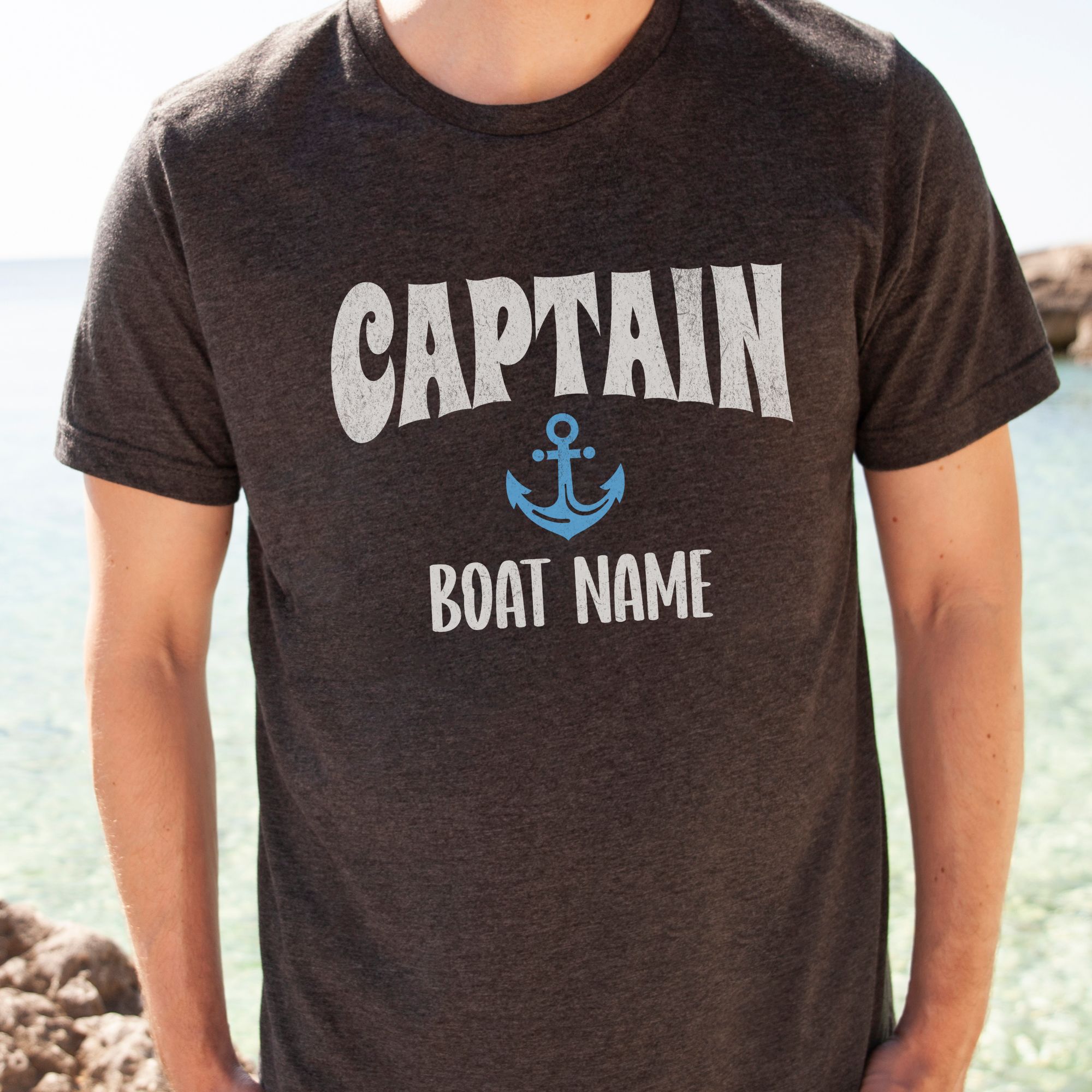
Captain Anchor Custom Boat Name Shirt
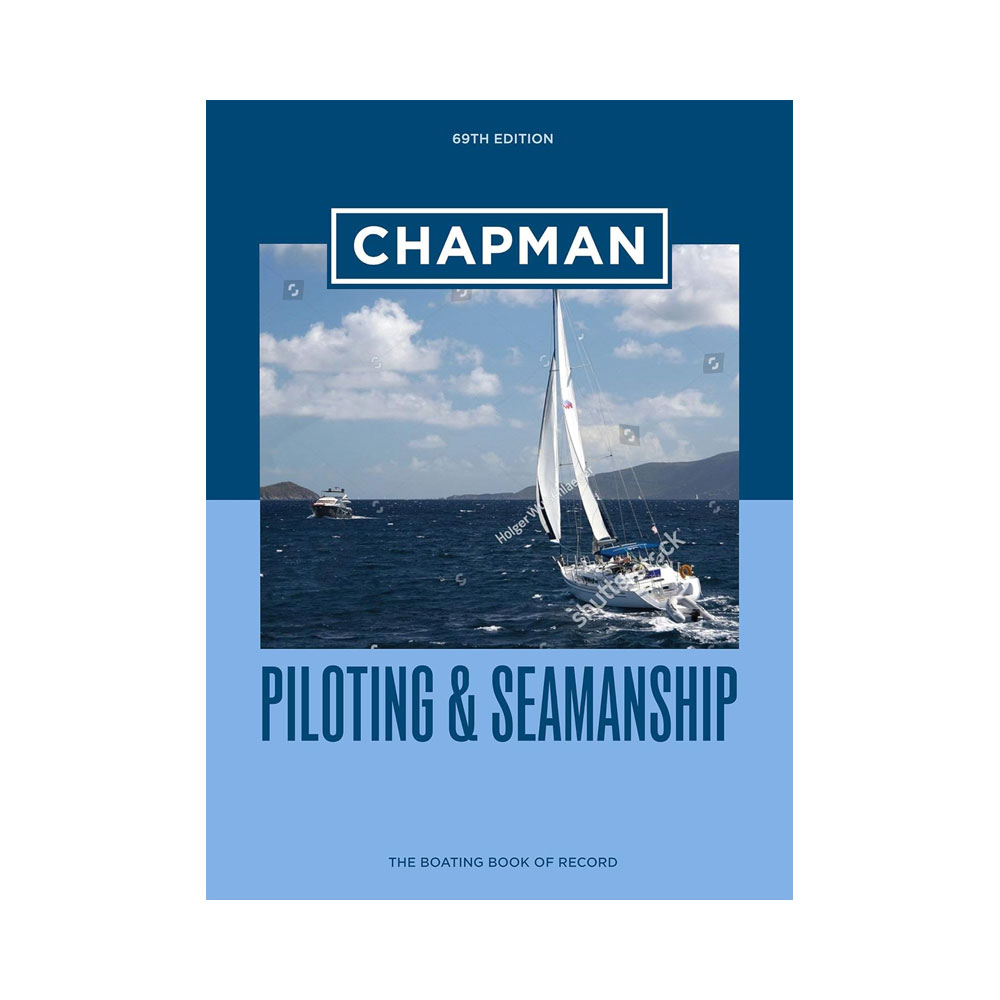
Chapman Piloting & Seamanship 69th Edition
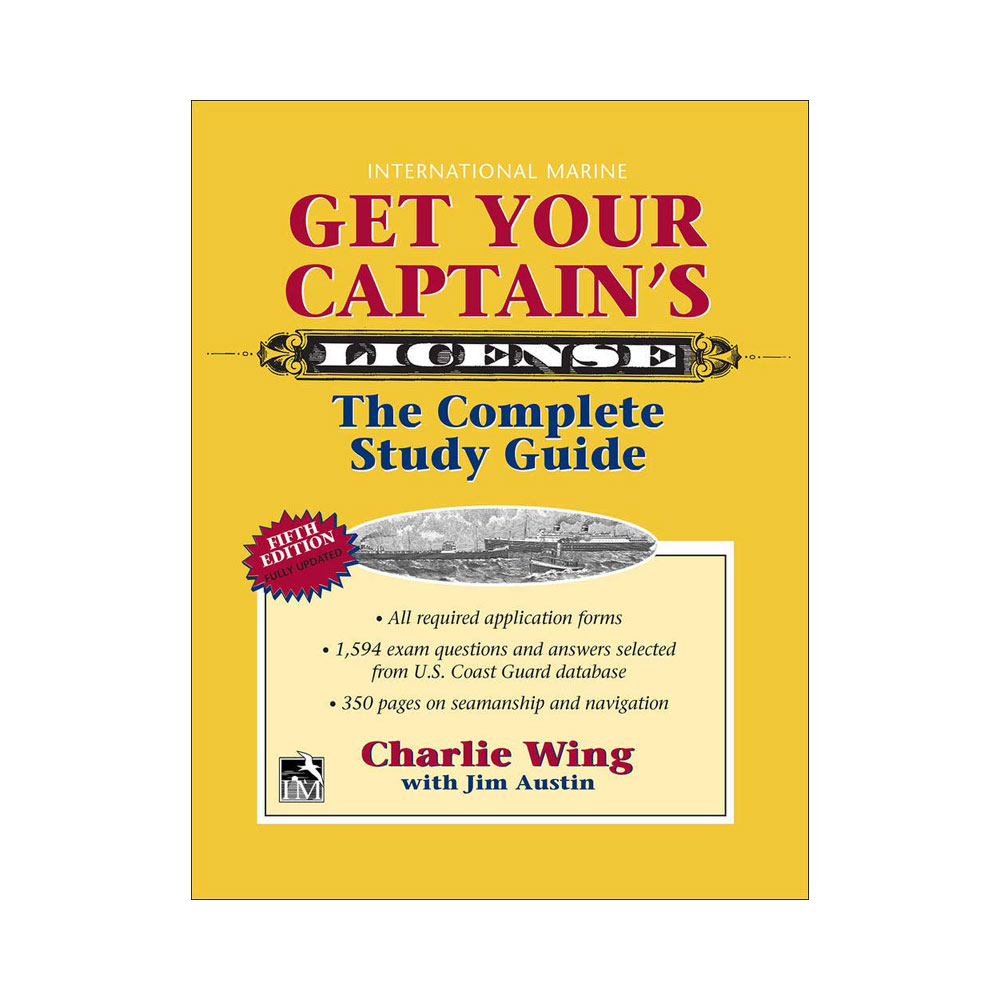
Get Your Captain’s License Study Guide
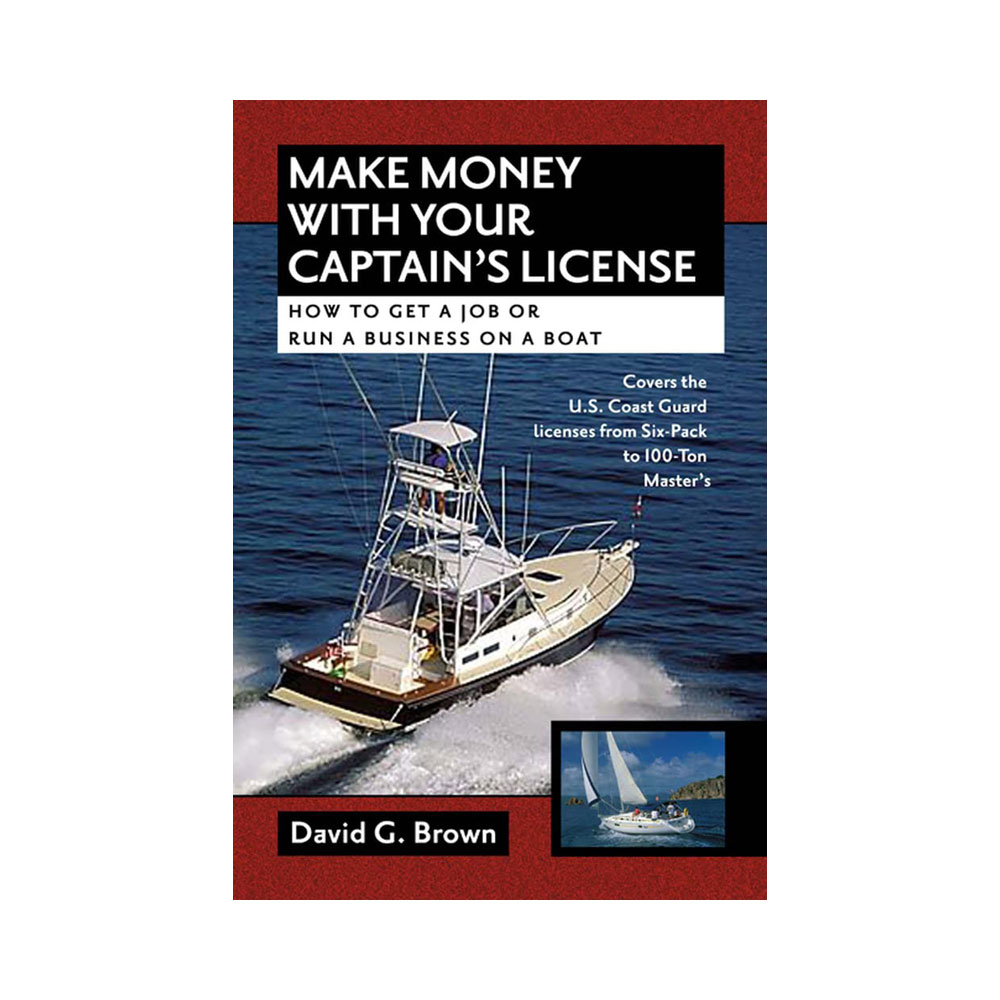
Make Money With Your Captain’s License Book
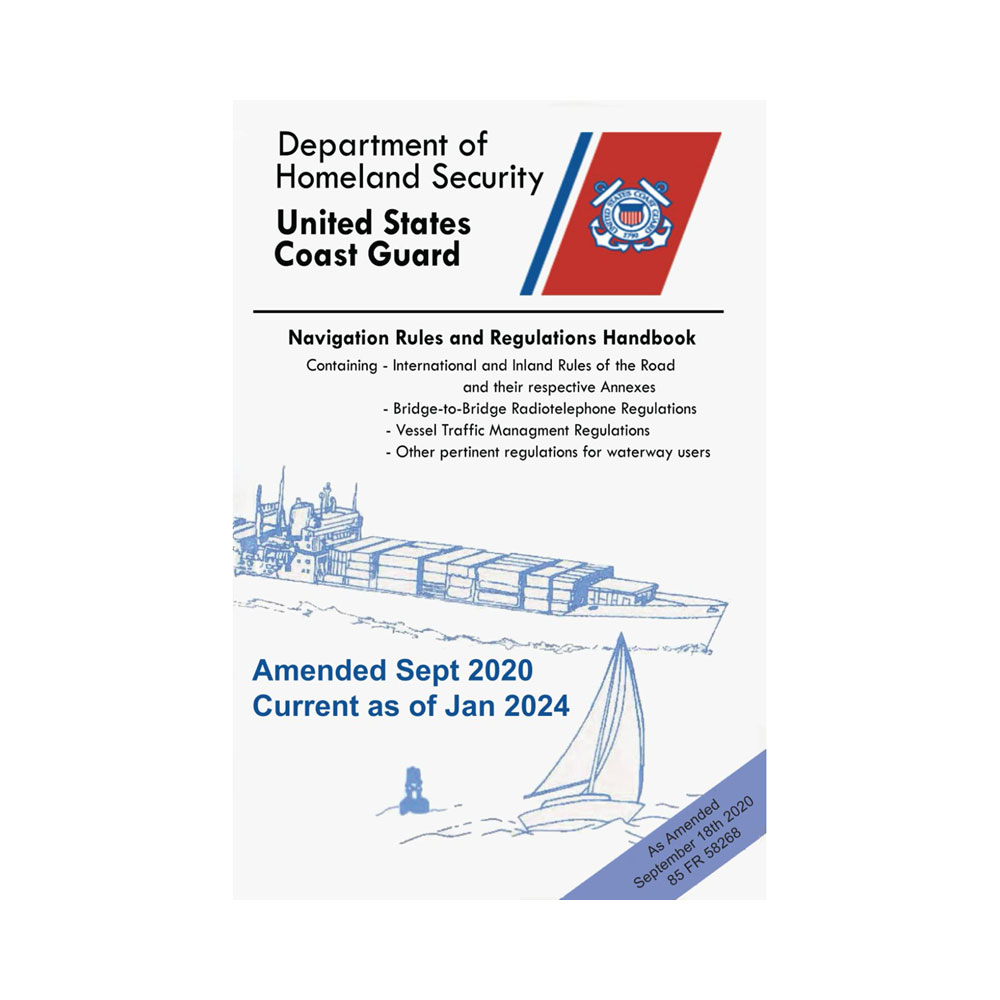
USCG Navigation Rules And Regulations Handbook
Trending now: father's day gifts for boat dads.
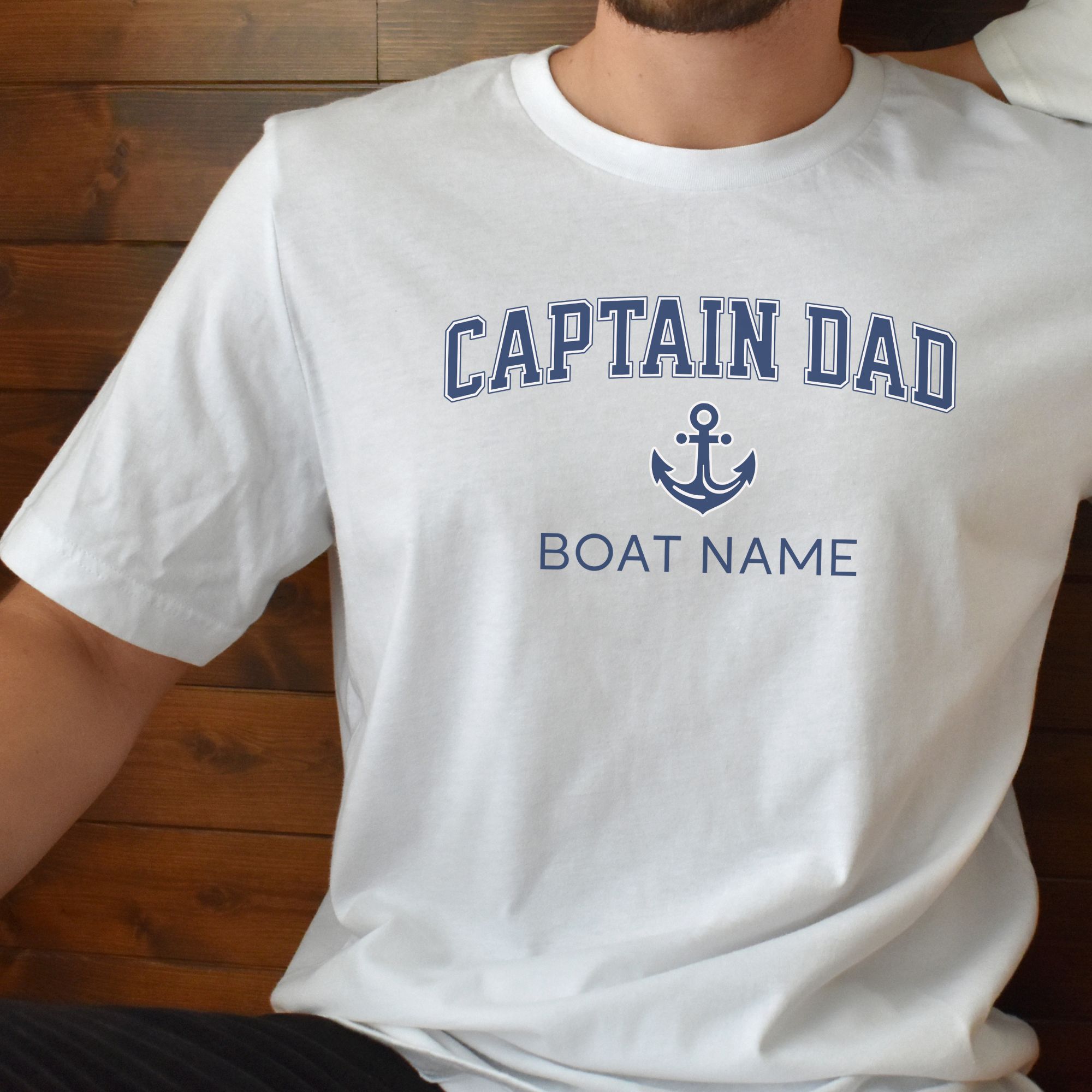
Captain Dad Custom Boat Name Shirt
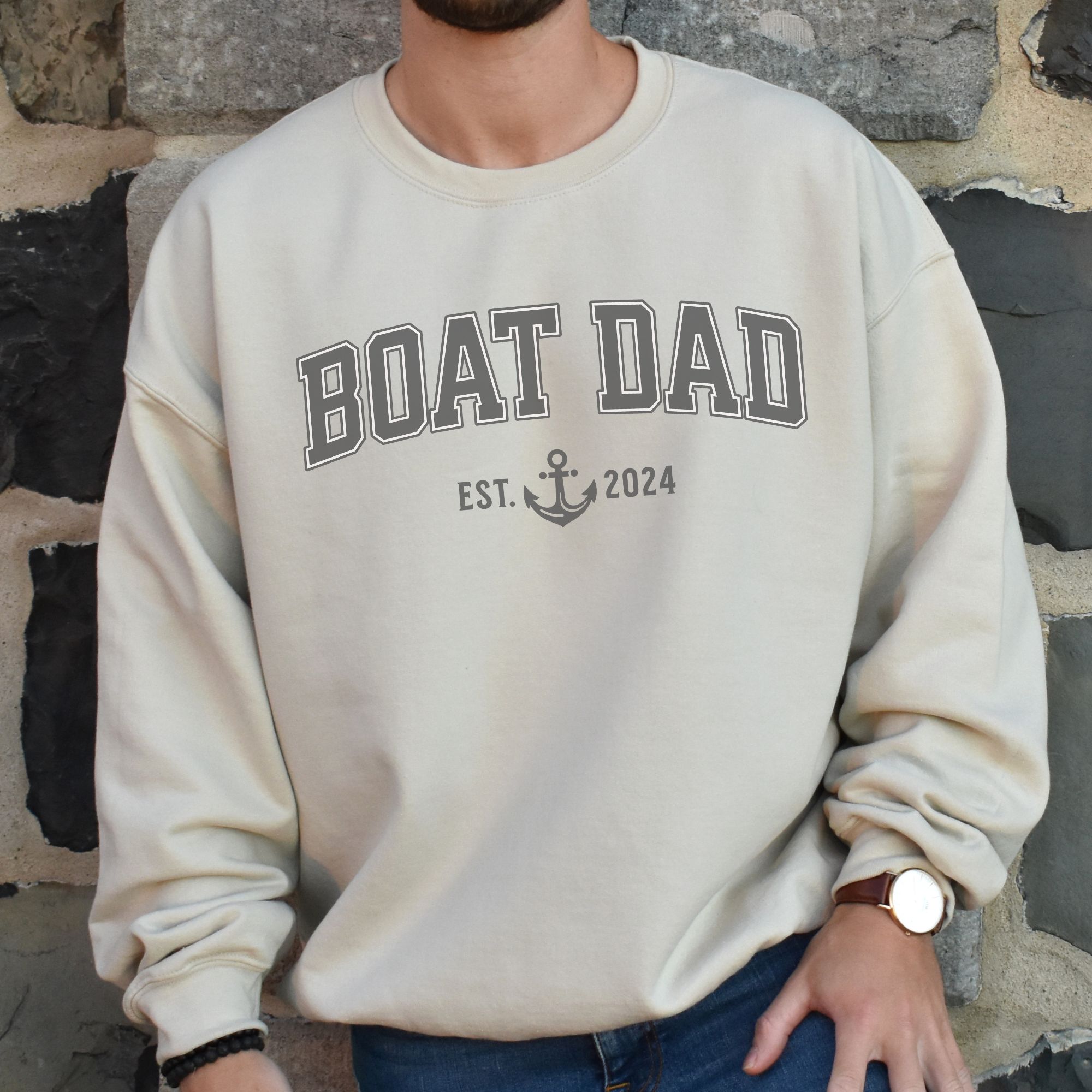
Custom Boat Dad Sweatshirt
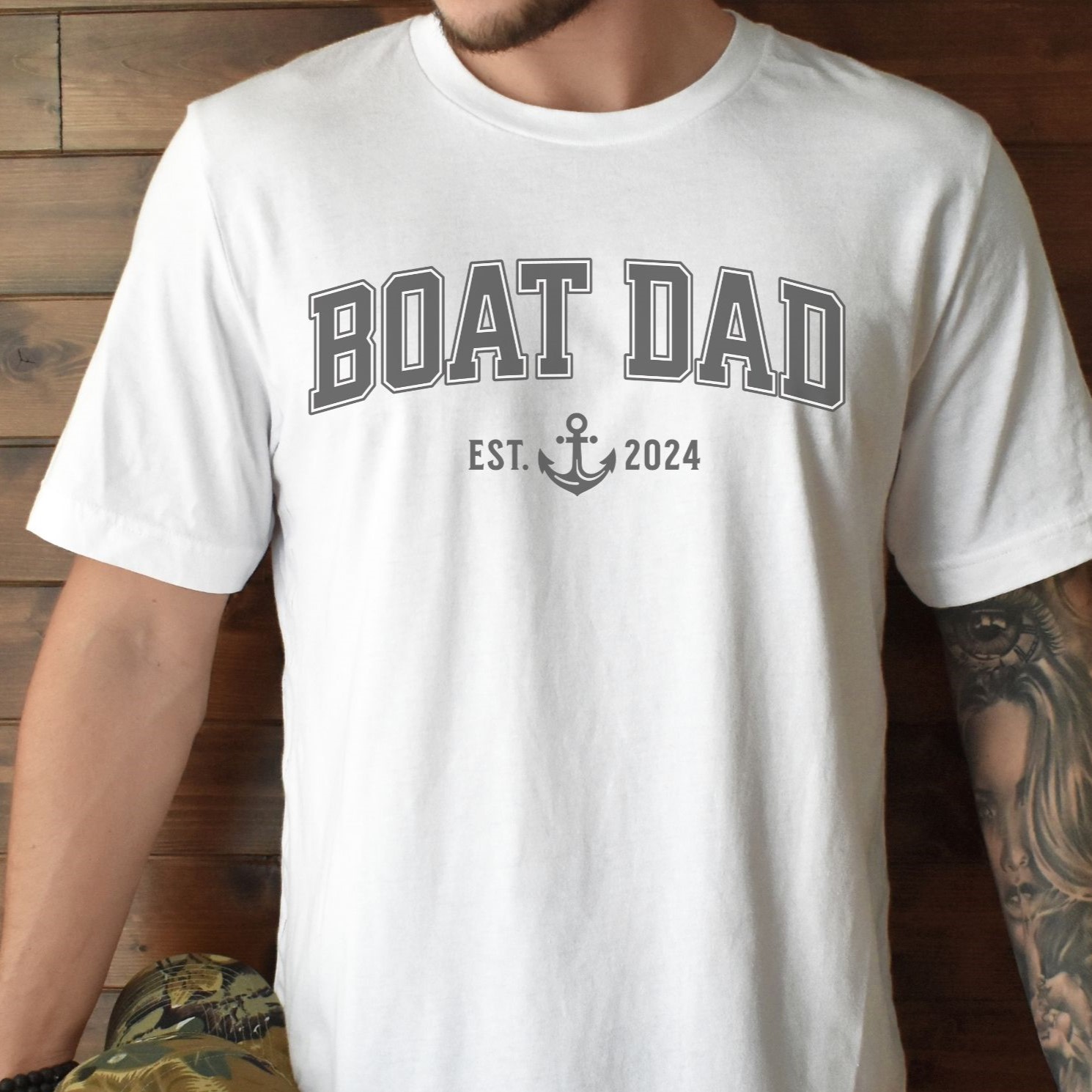
Custom Boat Dad Year Established T-Shirt

Capt. Rob Chichester
Related posts.
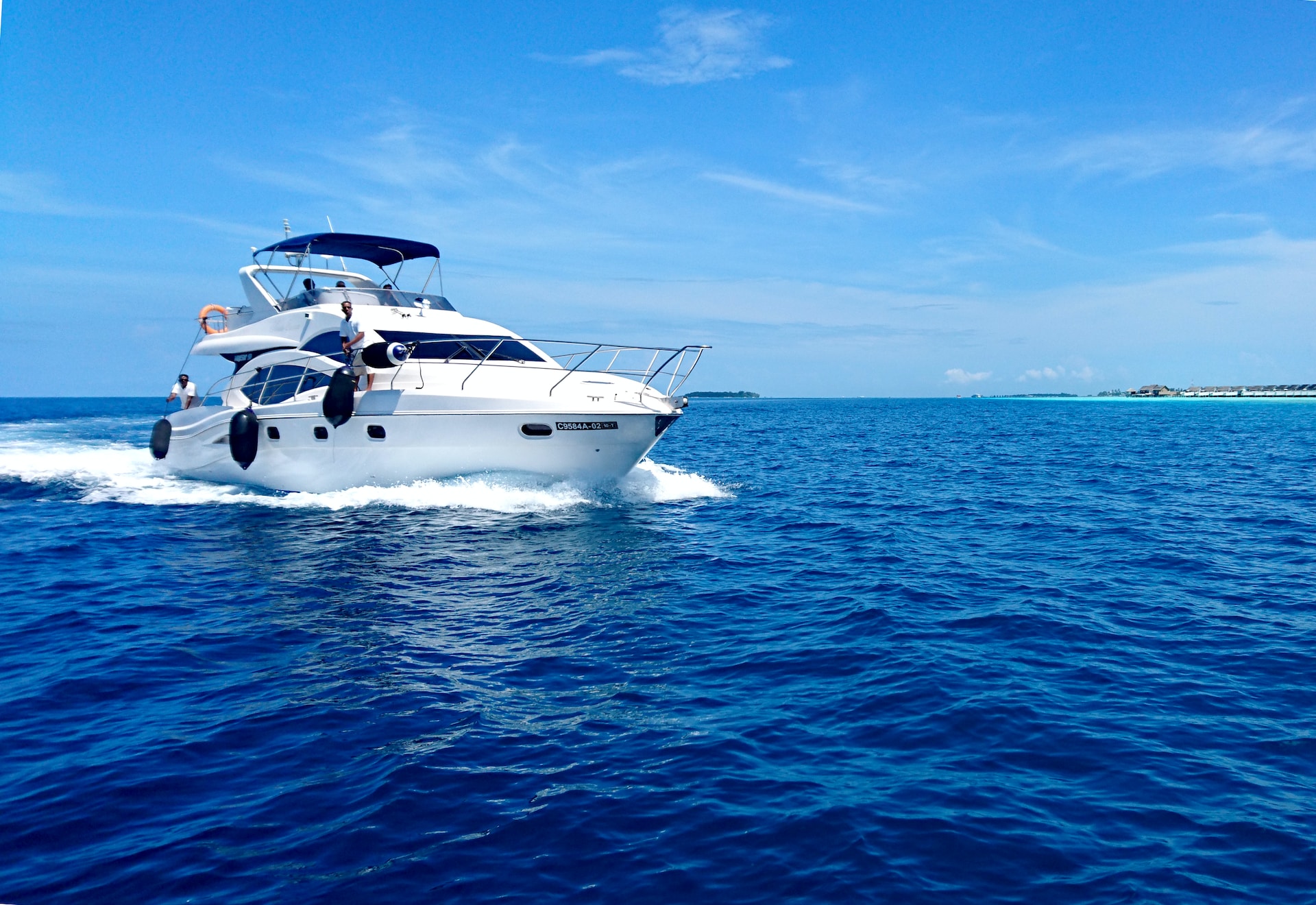
Can I Drive My Yacht Anywhere In The World?
May 11, 2023
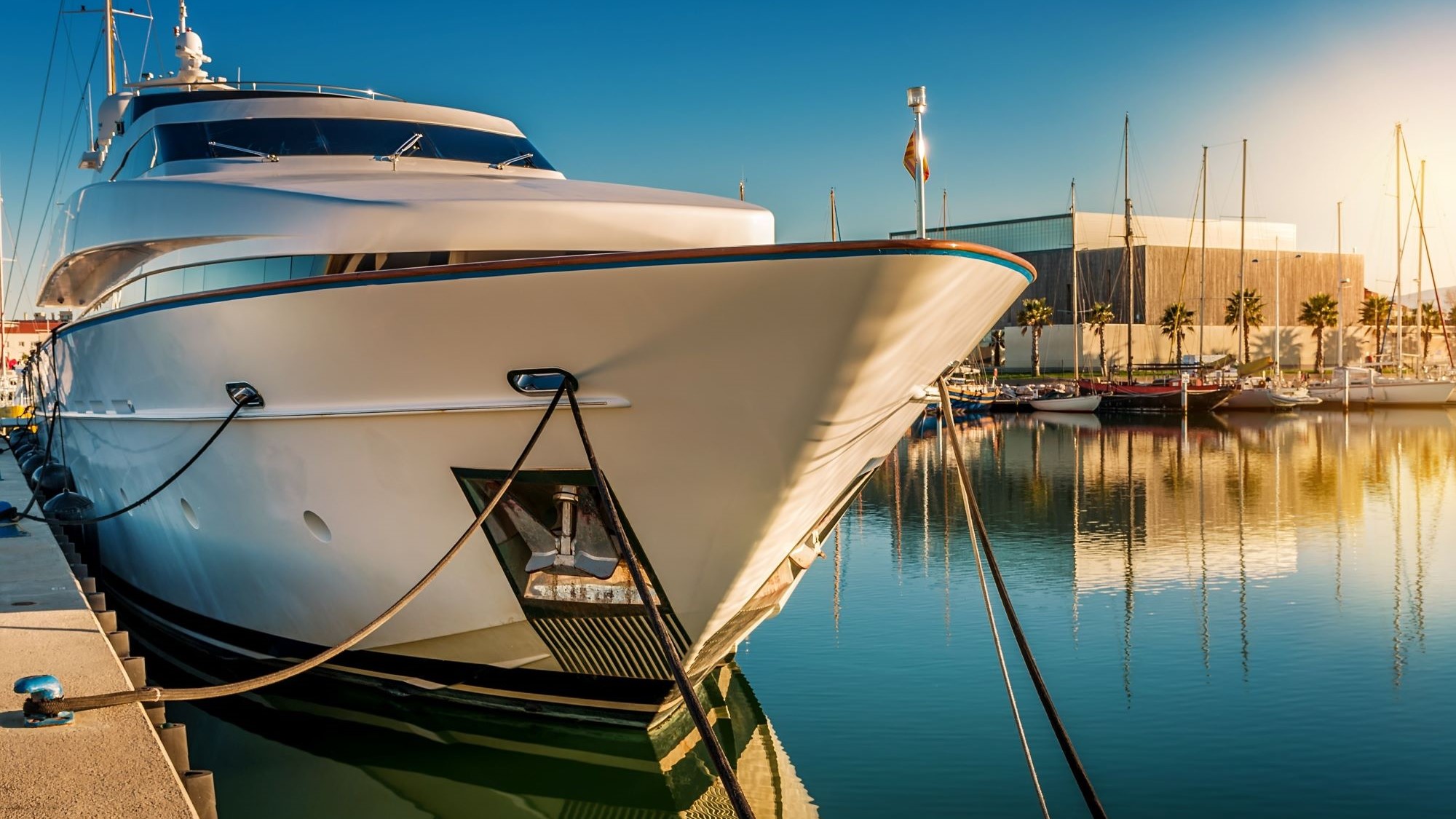
How To Transport A Yacht Safely
April 7, 2023
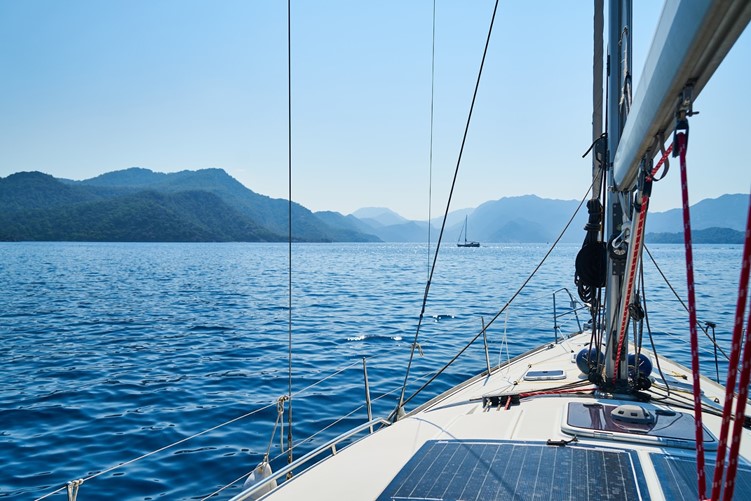
How Hiring a Captain Can Make You a Better Boater
May 29, 2021
24 Comments
Hi, I am hoping you can help me out. I am a USCG vet that was stationed at a small boat station in NJ from 1983-1989. I am trying to get my sea time documented but I am having a very hard time finding out how to do that since the station records were not computerized at that time. I have contacted the NMC and they told me to call the station to get an Abstract of Operations report. They just laughed at me when I called the station. I have requested info from vetrecs.archives.gov but I am sure that will take some time just to get an answer as to wether they can do that or not. I was wondering if you knew how to go about getting the information that I need. I am sure I am not the only person with this issue and I can’t seem to find anyone that knows exactly how to go about documenting that time.
Thanks Jeff

Thanks for your question. I don’t have a lot of advice for you regarding USCG internal procedures. Perhaps you can contact the Office of Personnel and try to get a copy of your service record. Alternatively, is there anyone at that small boat station who knew you? Would the OIC be willing to write a letter? The last and least likely option would be to fill out your own sea service form and see if anyone there would sign off on it for you. Now the regulations speak of a Certificate of Discharge being acceptable. See for example 46 CFR 10.232 ( https://www.law.cornell.edu/cfr/text/46/10.232 ). If you already have that, you might be good to go!
So…start with your Certificate of Discharge and if you don’t have that, then contact the Office of Personnel to see if you can get the requisite documents. Let me know how you make out!
Hi Captain Rob, My name is Elton the 66 year old owner of a small 35 ft. Kingscraft houseboat. I spend a lot of time on one large lake. It is an older wonderful all aluminum vessel but weighs only about 8000 lbs. In the chart the lowest weight rating is 17 tons. I would love to educate myself and become a Captain. Is that possible at some level? I would also have to document my own time as pilot.
Sir, you have open to you both options that I describe in my article. You could pursue either a Master’s license OR an Operator of an Uninspected Vessels license. From what you have written, I see no inherent obstacles. You must be able to document your seatime, get a medical evaluation, and pass the 4 or the 3 parts of the written exam depending on which license you choose to pursue. In any event, you would qualify for an Inland license. Your tonnage rating would also depend on which license you pursue. Solely based on what you have said above, you would qualify for a 50 ton Master’s license. If you pursue an OUPV, that comes with a tonnage rating of 100 tons. For most people, the biggest challenge is acceptably documenting seatime. (It needs all be as captain. You can include time served as master, mate, or crew but NOT as a paying passenger.) If your concern is your age, I know a few captain’s in the 60s and 70s. I am one of the former myself. Good luck!
Capt.Rob I am US Army Veteran And I was wondering if their was a school i could attend to obtain a licence, I ask this because i have to decide what i want to go to school for and this job would be a top pick for me. Any help on this matter would be greatly appreciated thanks
There are MANY captain schools that can help you with the written tests but there are NO schools that can help you with the sea time requirements unless you are considering enrolling in a maritime college like Kings Point or Fort Schuyler in the New York State university system. I used Mariners Learning System for my written tests only because it was more convenient than going to the USCG REC to take the exams.
Where would I get sea service forms . I have owned and operated my own boats for over 30 years and am now being asked to get a captains liscence
There is a link in the article for the National Maritime Center. All the forms you needs can be found on their website. Alternatively, you can search for USCG National Maritime Center with your favorite search engine.
Couple questions. Would working as a divemaster on a dive boat in the Gulf of Mexico count for near coastal sea time? And if you were to have 8 hours of sea time in one day, could you potentially count that as two days at sea? Or would it still be just one day? Thanks for all the info this has been a huge help!
Any time spent aboard a vessel underway counts as long as the owner, manager, or master of the vessel will attest to that. When submitting Sea Service forms, your option for your role aboard the vessel are things like crew, mate, master, engineer, etc. You will need to determine what your position was. Divemaster is not recognized and does not speak to maritime skills necessarily. (For example, you can dive from shore never having been in a boat.) Regarding the near coastal time, you just need to verify that the vessel upon which you served was indeed in near-coastal or ocean waters. The form has spaces for days spent within the specified boundaries and outside those boundaries. I once saw an interactive chart online for finding the boundary lines in a given area. For your purposes, you cannot count 8 hours as two days underway. You need a MINIMUM of 4 hours underway to count that day. Being at anchor or otherwise moored or secured does not count. Good luck!
Capt. Lots of good and helpful info. I boated the Chesapeake for 10+yrs, from the Delaware bay to Virginia in a 27′ cruiser. i’ve not been on the water since 2012. So to be clear, I need to acquire some time on a charter vessel to even attempt the basic “6-pack”. I have my CG boating skills and seamanship certificates,and will work on the CG719S. Living in Florida, lots of opportunity, should have done this sooner !! Thanks
Thank you for your feedback. I am glad you found the article helpful. Apart from documenting your sea time, I found the most labor intensive aspect was verifying that a) I had all the documents that I needed and b) I had correctly completely all of the USCG forms. A lesser challenge may be in determining what correct application fees are. If you are not sure, contact USCG NMC by phone, email, or online chat to get clarification on what fees you have to pay. Good luck!
This is great info..
I am starting out (hopefully) as a plan is due to new lifestyle i desire to get an two oceans open ocean 800 expedition catamaran (again very expensive so fingers crossed) but the plan is while the vessel is being built, i can take several classes and get a few certifications prior to launch, then as life you see everywhere on youtube for example have the vessel at dock, then day trips, then a week trip and just push it a little further until you are ready for the maiden voyage, really looking to live off anchorage in around the philippines / guam area mostly philippines or south pacific area, mostly friends and family but my question is any licence for that type of boat, and also if you have heard of any schools in the philippines? I know they have a few courses that are completely certified like any american school but a fraction of the cost, just curious if any particular licence i need to get or have?
You did not say whether you intended to take passengers for hire. Generally, one only needs to be licensed if you are getting paid to carry passengers OR if you working in more advanced maritime fields like tug boats and large cargo vessels. If you are only operating your private vessel for your own personal or recreational purposes, you usually do not need any kind of license other than possibly taking a multiple choice test on local safety rules and rules of the road. I am not familiar with the licensing requirements in foreign venues like the Philippines. Each nation has its own requirements. I was able to find information at this link: http://www.marina.gov.ph/policies/MCs/mc170.pdf . You may find some useful information in that document.
Good luck! And safe sailing…
Your information was helpful, thank you. I have decided to pursue getting my License but I am starting from scratch. Should I take classes before looking to get sea time? And how does one go about getting sea time with no experience?
Any course work you take will typically culminate in a certificate of completion. However that certificate will only be valid for 1 year. Therefore, do NOT take any exams more than about 6 months prior to submitting your original license application. As for sea time, you can look for marine work that does not require a license like deck crew on water taxis or excursion boats. Time spent on a friend’s boat counts. Have that friend complete and sign a sea service form. Sea time never expires and can be counted from the age of 15. Learn your rules of the road and learn to feel your vessel. Driving a boat is a lot different from driving a car. As a licensed captain, you are expected to step up to the helm and handle the ship with relatively little training time. Good luck!
Great article, thanks for writing it! Does time spent aboard a recreational boat that I own, when I am the only person aboard, count towards sea time? If so how do I document that – there’s no one to sign for the time. Thanks again.
Time spent on your own boat absolutely counts. You would sign the CG-719S Sea Service form yourself where it says Applicant AND where it says Person Attesting to Experience. However, you will have to provide proof of ownership for the vessel. The Bill of Sale is usually what is used but the vessel’s CG document or state registration card should also be sufficient. Remember that seatime is counted only from the age of 15 and it is underway time of at least 4 hours per day. Time on the anchor or alongside do NOT count. The presence of others is irrelevant.
Hi Shane. Sea time is defined as time working aboard in any capacity relevant to the rating you are pursuing. For instance, if you are a bos’n or deck crew, that time it unlikely to count towards a engineer’s license and conversely, time in the engine department or work on mechanical systems would be difficult to apply towards a deck officer’s license. The highest rating one can get on an original (i.e., first) license is 100 Ton Master. It is likely that your Navy time would count; however, your challenge is getting an appropriate service letter from the Navy. You cannot submit a CG-719S for your Navy service as that form is for SMALL VESSEL service. Consult the USCG site at http://www.uscg.mil/nmc for more information. Also note that you may use any valid sea time accrued from the age of 15. Good luck!
Hi Capt. Rob, I have one question rather just some clarification regarding the time at sea, for the tonnage rating. Does “time at sea” mean just that or does it mean operating the vessel. I was in the Navy for several years as an operations specialist and I am not sure what level I would qualify for if I were to pursue getting a Captains license. Also I was wondering how much the entire process would cost.
Hey Rob, Thanks so much for taking the time to write this, it was really very useful to read. This has been on my mind for some considerable time, but I am now finally starting on the road to getting my licence and taking a nautical shift in my career. I have been a sailor all my life, was sailing single handed as soon as I could walk and now own a 38 foot Irwin racer/crusier.
My one big question is online study vs going somewhere to do the required course? I wonder how you gained your licence and what you might recommend?
My issue was primarily NOT wanting to have to take the tests at the NYC REC and to NOT attend intense 8-10 hour weekend classes. I was comfortable with the Rules of the Road and chart navigation issues as well the Deck General material. Since I got a Master’s license (versus the OUPV), there was more legal stuff to know in the category they call Ship’s Business. I did an online course through Mariner’s School in Princeton, NJ. The price was good and the location was convenient for when I did go to take the test.
The bottom line is do what works best for you given what you need to learn or refresh, how much time you have to do it, and where you will need to go to take the final tests.
(Please note that you can submit your application and/or take your tests at ANY REC anywhere. It is not a function of where you live or where you will sail.)
Great article Rob. Thanks for sharing your experience
Thank you for the feedback. Do please let me know if you have any further questions or if I may be of service in some other regard!
Comments are closed.
BIG SALE!! Save on Boat Gear with West Marine's Memorial Day Sale AND SAVE 25% on My Boat Life items hurry sales expire soon!

Upgrade to Masters License 25/50/100 Ton
Prerequisites.
OUPV Captains License & Sea Experience

License Description
The Masters license allows the transport of passengers on an inspected passenger vessel. These vessels must have a Certificate Of Inspection (COI) which states the number of passengers allowed and area of operation.
Two types of licenses
Inland: May take passengers upon inland waters only
Near Coastal: May take passengers up to 200 miles off shore
USGC Approved Master 25/50/100 Ton Near Coastal Course
All testing is completed with The Captain School. You DO NOT test with the Coast Guard
Certification
Upon successful completion (attendance and passing required exams), you will receive a diploma from The Captain School. Students send diploma and application to the U.S. Coast Guard REC, along with your USCG Application to receive your USCG License.
(You have up to 1 year to submit your application to the Coast Guard from the date on your diploma.)
Eligibility Requirements
USCG Application Age: 19 years old
Sea Experience
Inland Masters 25/50/100 Ton
- 360 day underway on navigable waters
- 90 days of the 360 must be within the last 3 years
Near Coastal Masters 25/50/100 Ton
- 720 days underway
- At least 360 days must be upon near coastal or ocean waters
- At least 90 days must be within the last 3 years
* A “day” is defined as 4 or more hours away from the dock
Course Schedule
Cape coral, fl.
June 30-July 2 July 21-24 Aug 18-20 Sept 22-25 Oct 27-30 Nov 17-20 Dec 15-18
Orange Beach, AL
http://www.boattutors.com
To sign up for classes in Orange Beach, AL please click on the boattutors link above and then the “Reserve your seat for the Captain School Orange Beach, AL” link from the menu. You can also call Captain Jack Sanzalone at (941) 268-6622 or email him at [email protected]
May 24-26 Jun 16-19 Jul 21-24 Aug 18-21 Sept 22-25 Oct 20-23 Nov 17-20 Dec 13-15
Marrero, la.
April 22-26
To sign up online please visit www.captainschoolneworleans.com
TYPICAL SCHEDULE IS Sun 8:30A.M.-5:30P.M. MONDAY-WEDNESDAY 6P.M.-10P.M.
Sign Up Online
U.S. Coast Guard Questions and Answers
Uscg captains license practice tests.
Are you studying for your Captains License or 100 Ton Masters License?
Step into your exam with confidence by taking the USCG Captains License Practice Tests online. This will help you quickly identify the sections you are weak on and need to spend a bit more time studying. The real exam is NOT the place where you wish to find out what you do not know!
Over the last 10 years we have collected over 20,000 questions released directly by the United States Coast Guard. These are the same questions you will encounter in your USCG Licensing Exam. Those looking for a comprehensive 100 Ton Masters License Practice Test will especially appreciate the depth of questions available.
These will give you the most realistic simulation of the questions you can expect. Getting comfortable with the style of questioning, being able to spot the trick questions and identifying your weak areas are just some of the major benefits provided by taking the practice tests.
The USCGQ system offers much more than just practice tests though.
You can study questions along with their answers easily by using the “answer mode”. Switch back to “normal mode” to have a random quiz of questions on your selected topic. Correct answers are instantly shown after you have selected your choice.
Registered members can generate a formal Captain License Practice Test where the answers are only revealed at the end of the test. This provides the best simulation of the actual exam.
You can also print generated practice exam questions to study offline or do a paper test.
The questions cover the following modules:
- Rules of the Road Practice Test
- Navigation General Practice Test
- Navigation Problems Practice Test
- Deck General Practice Test
- Deck Safety Practice Test
Click any of the buttons to start the instant Practice Quiz and test your knowledge.
Practice Test Modules

Used Yachts For Sale From 91 To 100 Feet
Listed below are used yachts for sale worldwide from 91 to 100 feet. Use the search tools to narrow your exploration. SYS Yacht Sales offers a wide range of used yachts for sale, including explorer yachts, luxury cruisers, motor yachts, trawlers, pilothouse yachts, sailing yachts and everything in between. Search top brands like Hargrave, Princess, Ferretti, Sunseeker, Azimut, Benetti and much more. Need assistance? Contact our experienced yacht brokers. We look forward to helping you find the yacht that's right for you.
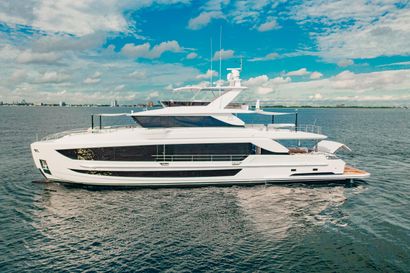
Horizon FD100
Fd100-908 - in production.
All Ocean Yachts Tri-Deck Explorer Yacht
All ocean yachts 100' steel or fiberglass.
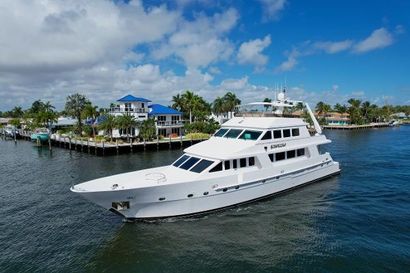
President 100 Motor Yacht

Nautor Swan 100

Canados Oceanic 100 Tri-Deck
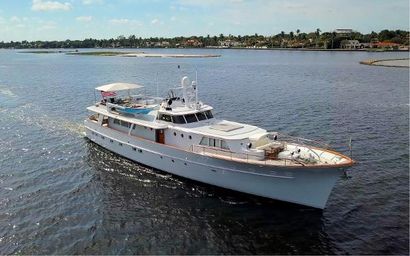
Burger Classic
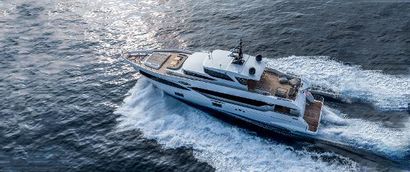
Majesty 100
Order to build.
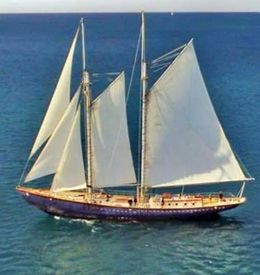
Custom Colvin Schooner
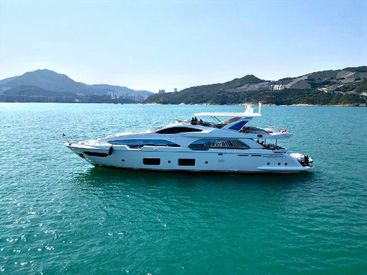
Azimut 100 Grande
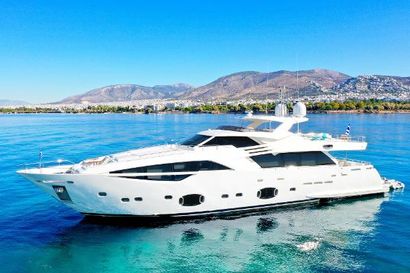
Custom Line Custom Line 100
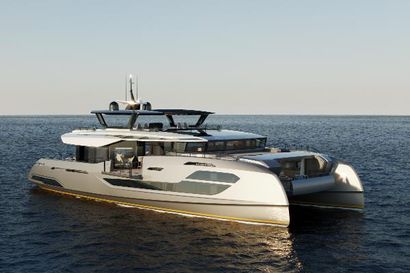
Extra X30 VILLA
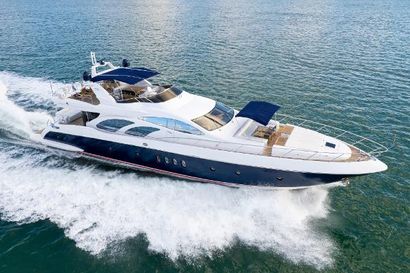
Azimut 98 Leonardo
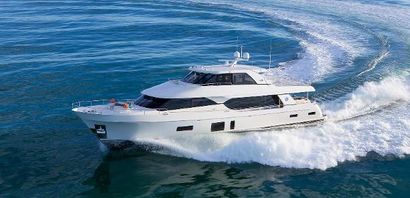
Ocean Alexander 100 Motor Yacht
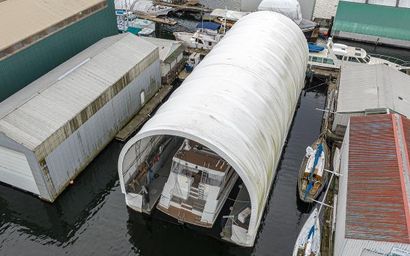
Custom Boathouse / Dry Dock
Eagles nest.
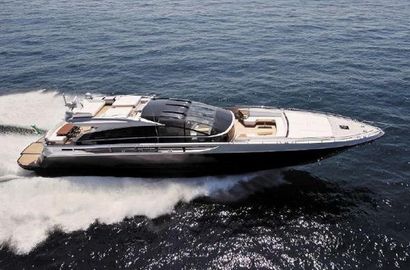
Baia ONE HUNDRED

Ocean Alexander 100 Motoryacht
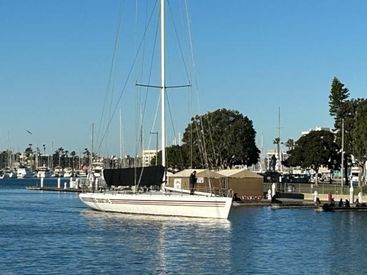
Custom 100' Sailing Yacht
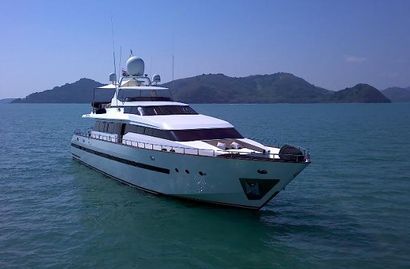
Mangusta 100
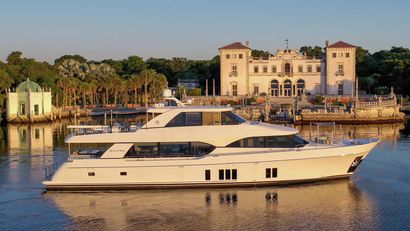
Ocean Alexander Skylounge
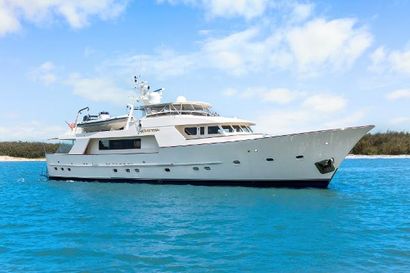
Motor Yacht 100 Ditmar & Donaldson
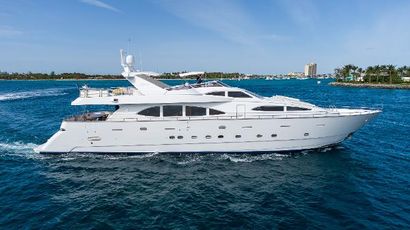
Azimut 100 Jumbo
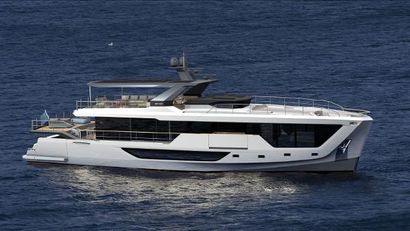
Numarine 30XP
Numarine 30xp.

Azimut 100 Leonardo
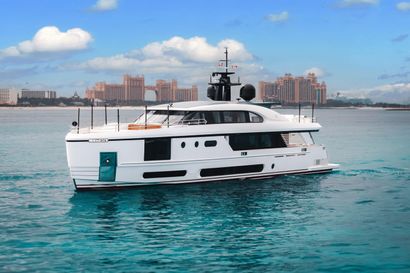
Azimut Magellano 30M
Fifth season.
- Event Details
- THE PRINCESS PASSPORT
- Email Newsletter
- Yacht Walkthroughs
- Destinations
- Electronics
- Boating Safety

10 Motoryachts Over 80 Feet For Sale Now
- By Yachting Staff
- May 20, 2024
Most boaters start their journey with owner-operator-size boats, but as their enthusiasm for the pastime grows as well as their voyaging aspirations, so does the length of the boat. There comes a point where some boaters will choose to leave the helm chair and enter the crewed-yacht arena. If you’re a boater considering that move, here are 10 ready-to-roam yachts looking for new owners and new adventures.
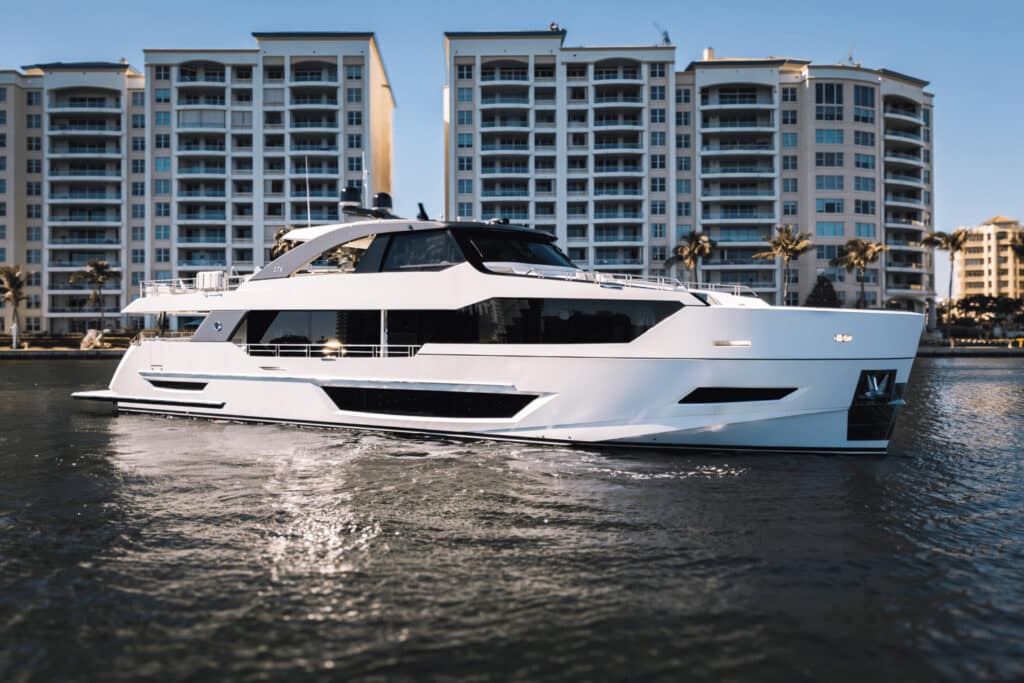
Ocean Alexander 27R – Almost Done – Pompano Beach, Florida
MarineMax has Almost Done , an Ocean Alexander 27R, listed at $7.99 million. The low-hour 2022 build will make a lasting impression with its beach club, whirlpool spa and five-stateroom layout which has an on-deck master stateroom and three VIP staterooms in total.
The “R in this series from Ocean Alexander, stands for Revolution,” Yachting previously reported . “It’s an apt description because the series, which also includes the 88-foot 27R and 97-foot 30R, is different from anything else Ocean Alexander has built in its 40-plus years in business. Starting with the styling, which is decidedly modern and edgy, there’s a deliberate break from the builder’s more traditional look. It’s all the more notable that the appearances of both the traditional cruisers and the Revolution series come from yacht designer Evan K. Marshall.”
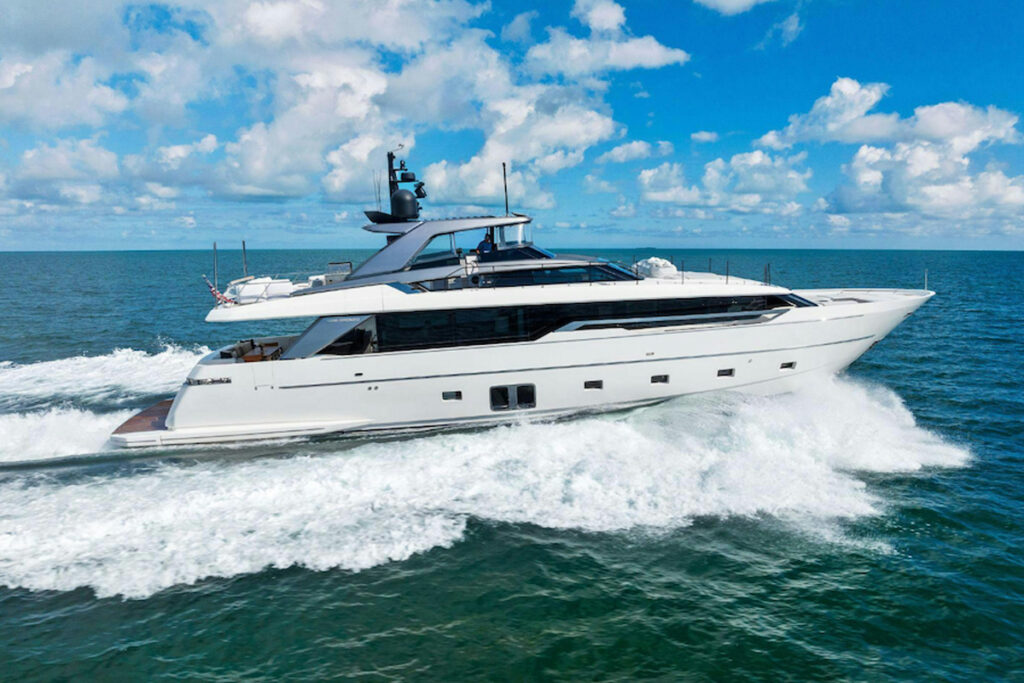
2021 Sanlorenzo SL96A – Gatsby – Miami, Florida
The Sanlorenzo SL96A Gatsby is currently listed with Allied Marine for $9.25 million.
“The ‘A’ in SL96A stands for asymmetric and Sanlorenzo achieves this unique design by, Conserving only the gangway on the starboard side and eliminating the one on the port side, which shifts to the roof of the superstructure,” says Sanlorenzo . “The asymmetrical configuration, seen on SL102A first, frees up about 10 square meters of space for internal use. With respect to a traditional layout, this arrangement offers more space, improving luminosity and flexibility.”
Furniture placement in the salon helps to define the yacht’s social spaces. A six-person L-shaped settee and ottoman are immediately to starboard with only a cabinet separating the settee from the sliding glass doors leading to the cockpit. A formal dining space for eight guests is adjacent to the salon’s settee, a feat only achieved because of the extra space afforded by the asymmetrical design. A flat-screen TV is mounted forward against the bulkhead separating the salon from the galley forward and to starboard, and the on-deck master suite forward and to port. A day head is just forward of the bulkhead and to port.”
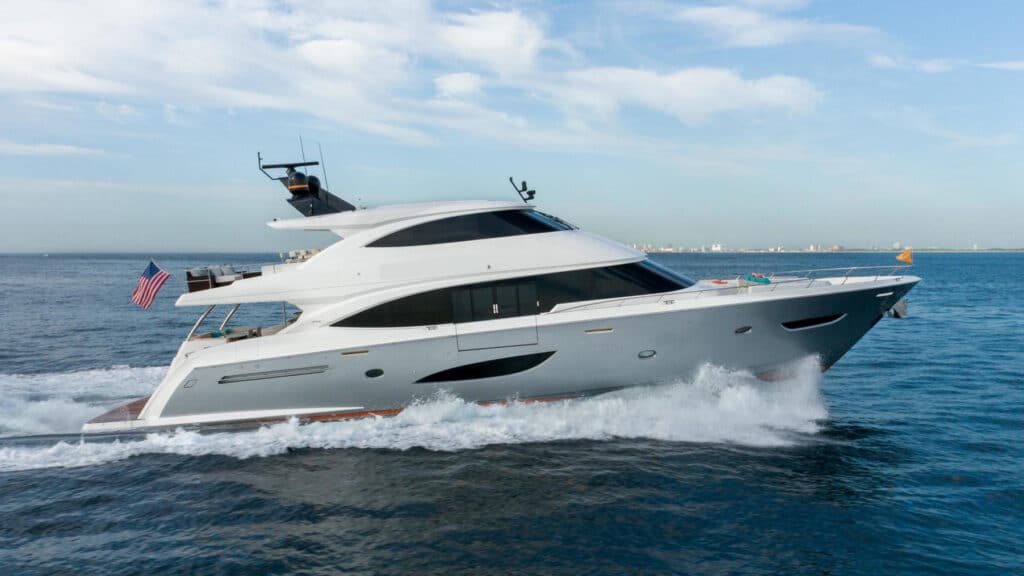
2018 Viking 93 Motor Yacht – Obsession – Stuart, Florida
Gilman Yachts has Obsession , a Viking Yachts 93 Motor Yacht, listed and an asking $7.4 million. The 2018 enclosed-flybridge motor yacht has charter potential with its five-stateroom layout, two crew cabins and a sub six-foot draft.
Yachting ‘s initial review of the Viking 93 Motor Yacht reported how the New Jersey boatbuilder’s flagship model was based on its 75 Motor Yacht’s design, but also drew inspiration from a Viking owner’s Westport 112 .
“One Viking owner also has a Westport, and Viking’s designers and top brass spent a good amount of time on board that yacht learning how to nail down the needs of owners in that size range. What Viking developed from that experience is a boat built for socializing, one that lets hands-on owners feel at home while enjoying mega-yacht features.”
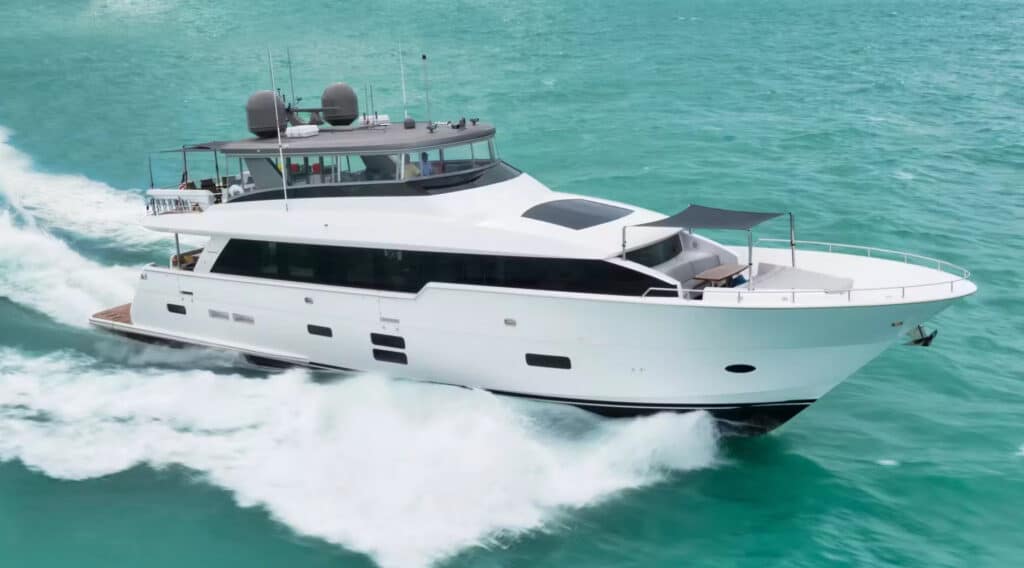
2019 Hatteras M90 – Jetstream – Key Largo, Florida
The Hatteras Yachts M90 Panacea called Jetstream is listed with Atlantic Yacht & Ship for $10.3 million. The 2019 build has an options list that totals more than $2 million. The motoryacht has a four-stateroom, five-head layout that sleeps 10.
This yacht can go the distance or go quickly. Captain’s choice. Twin 1,900 hp Caterpillar C-32A diesels provide power on Jetstream , giving it a reported 24.7-knot top speed and a 22-knot cruise speed. The engines have just 500 hours on them. Jetstream also has a Bahamas-friendly 5-foot-7-inch draft.
This Hatteras M90 Panacea has the performance, but it also has luxury cruising comfort. The salon feels thoroughly modern, thanks in part to the white-oak sole and light-tone furnishings. Frameless house-spanning windows and indirect lighting adds a sense of elegance and enhances the salon’s open feeling.
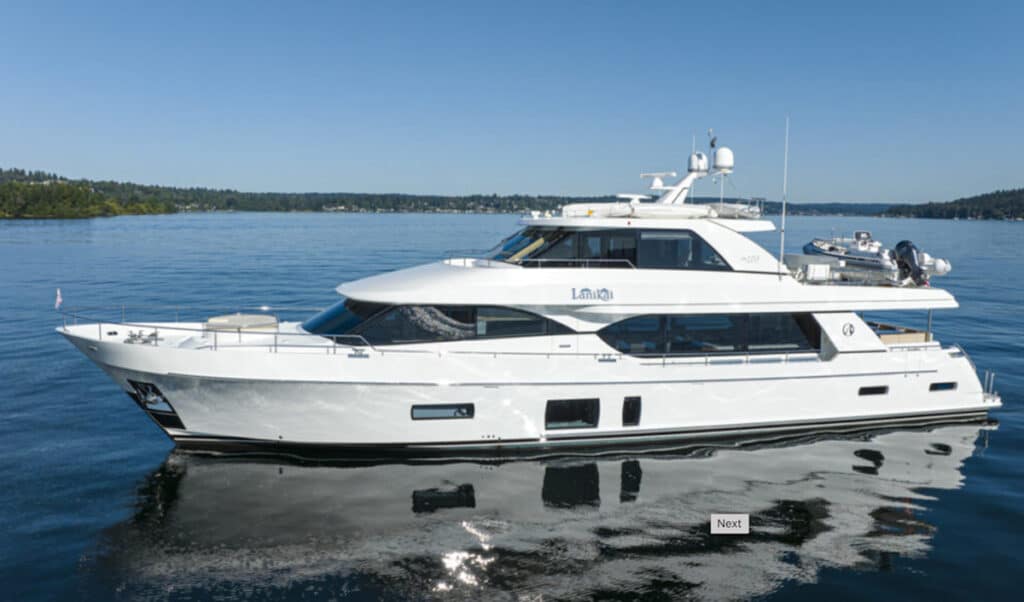
2019 Ocean Alexander 100 Skylounge – Lanikai – Seattle, Washington
Alexander Marine has Lanikai , an Ocean Alexander 100 Skylounge , listed for sale with an asking price of $9.8 million. The 2019 motoryacht has a five-stateroom layout, a crew quarters and engines with very low hours. Let’s take a closer look.
When Yachting first reported on the 100 Skylounge we noted at the time that “Ocean Alexander already offers a 90-footer with a four-stateroom layout whose guest spaces would qualify as VIP suites on most yachts. With its OA 100 Skylounge, the builder has added an on-deck master, much like the kind aboard superyachts. That’s one reason why Ocean Alexander calls the 100 Skylounge the entry-level yacht in its six-model mega-yacht series, which stretches up to 155 feet length overall.”
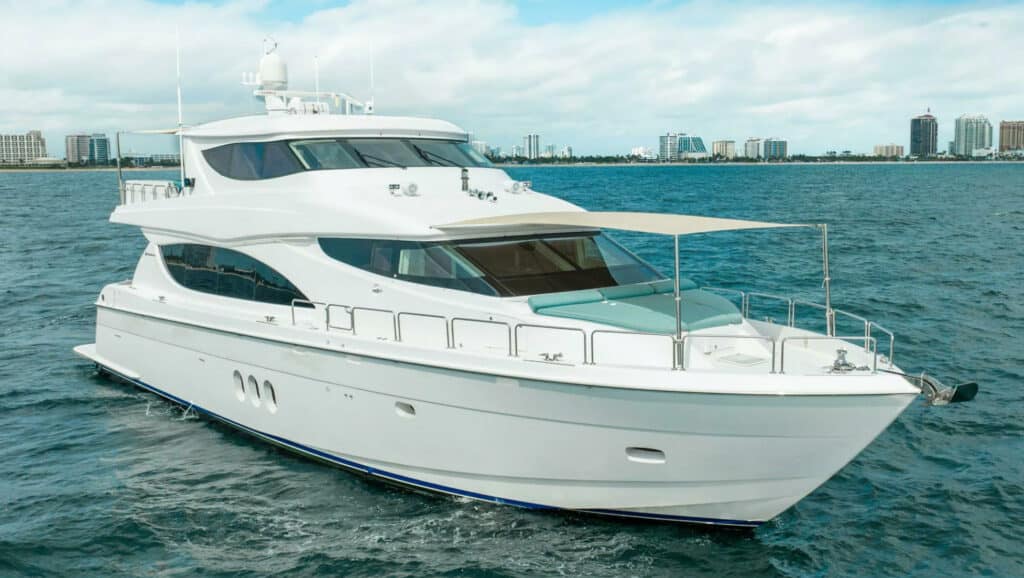
2014 Hatteras 80 Motor Yacht – Done Deal – Fort Lauderdale, Florida
Atlantic Yacht and Ship Inc. currently has Done Deal , a 2014 Hatteras 80 Motor Yacht , listed for sale with an asking price of $4.1 million. The 80-footer has a four-stateroom, five-head layout with accommodations for eight, and two crew cabins that sleep four.
The four staterooms include a full-beam master stateroom amidships with a centerline king berth and an en suite head. The forepeak VIP stateroom has a centerline queen berth and an en suite head. The portside VIP stateroom also has a queen berth and en suite head. The final guest stateroom is to starboard and has two single berths with an en suite head.
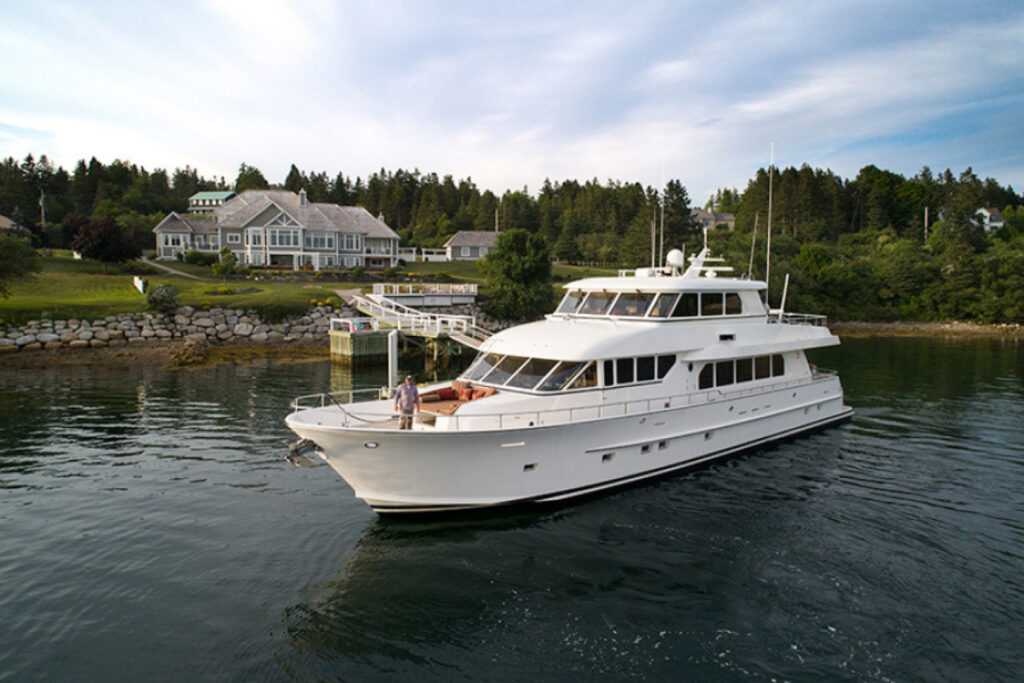
2009 Paragon 94 – Rhapsody – Chesapeake, Virginia
Rhapsody, a 2009 Paragon 94, underwent an extensive refit by Lyman Morse in 2018. The 94-foot motoryacht is currently listed for $2.975 million with Worth Avenue Yachts, which represents a $750,000-plus price reduction.
The refit included servicing all equipment and systems, updating soft goods, adding a dining area, transforming the flybridge into an enclosed skylounge and repainting the upper deck space.
Twin 1,550 hp Caterpillar C-32 diesel engines work with the yacht’s planing hull form (with 13.5-degree transom deadrise) to help propel this 100-ton motoryacht to a 20-knot top hop and a 14-knot cruise speed. The engines have just over 2,000 hours on them.
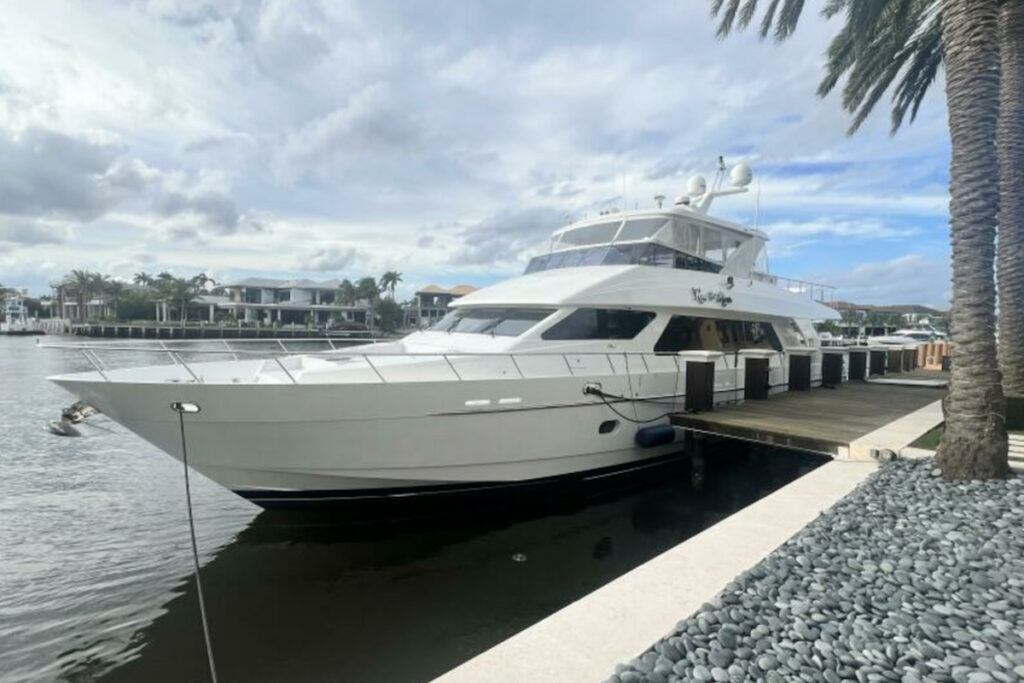
2007 Hargrave 82 – Roxy Maria – Fort Lauderdale, Florida
The 2007 Hargrave 82 Open Bridge motoryacht Roxy Maria could be a solid fit for an experienced owner-operator or for owners traveling with a small crew, according to Hargrave Custom Yachts, who built the motoryacht and is selling it for its current owners. The yacht is listed for $1.995 million.
When it comes to boat handling with or without crew, this Hargrave has upper and lower helm stations, bow and stern thrusters and two cockpit docking stations. There are also full walkaround decks and side-deck access from the lower helm station.
With regards to the interior layout, this yacht’s salon has three lounge chairs positioned around the room with a four-person sofa to port. The sole-to-ceiling, high -gloss cherry wood creates a comfortable, warm and inviting entertainment space. This interior design is from Yacht Interiors by Shelley.
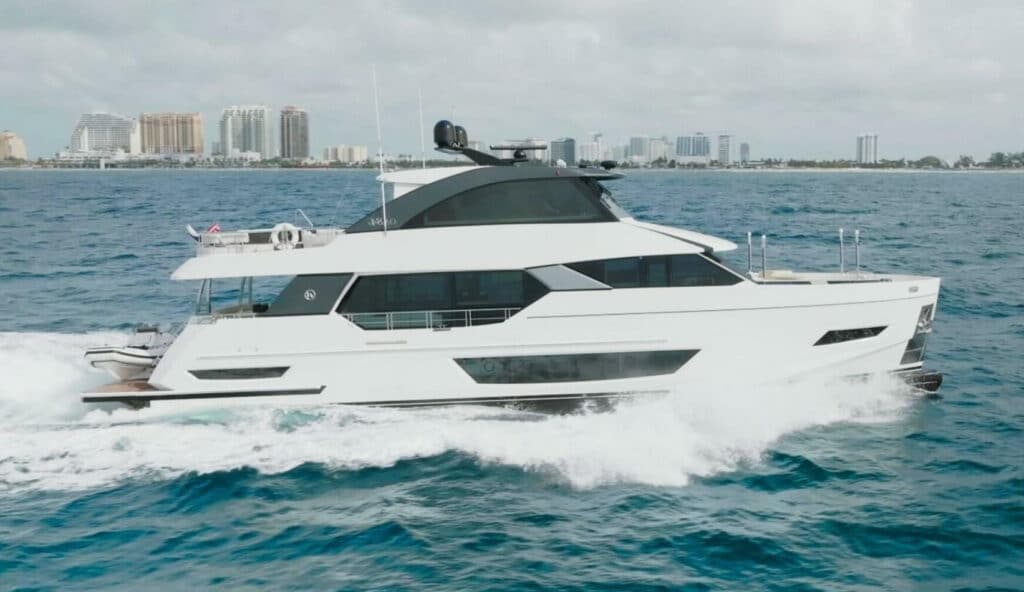
2020 Ocean Alexander 84R – Panacea – Fort Lauderdale, Florida
The Ocean Alexander 84R Skylounge Panacea is currently listed with Gilman Yachts for $6.65 million. The 2020 motor yacht has accommodations to sleep eight guests in its four-stateroom, five-head layout.
Yachting has previously reported that “the 84R is built via resin infusion with structural foam, fiberglass and carbon fiber, for strength at sea. Carbon fiber is applied to high-stress areas and used in construction of the sky lounge. Aluminum beams in the bulkheads and ceiling further strengthen the yacht.”
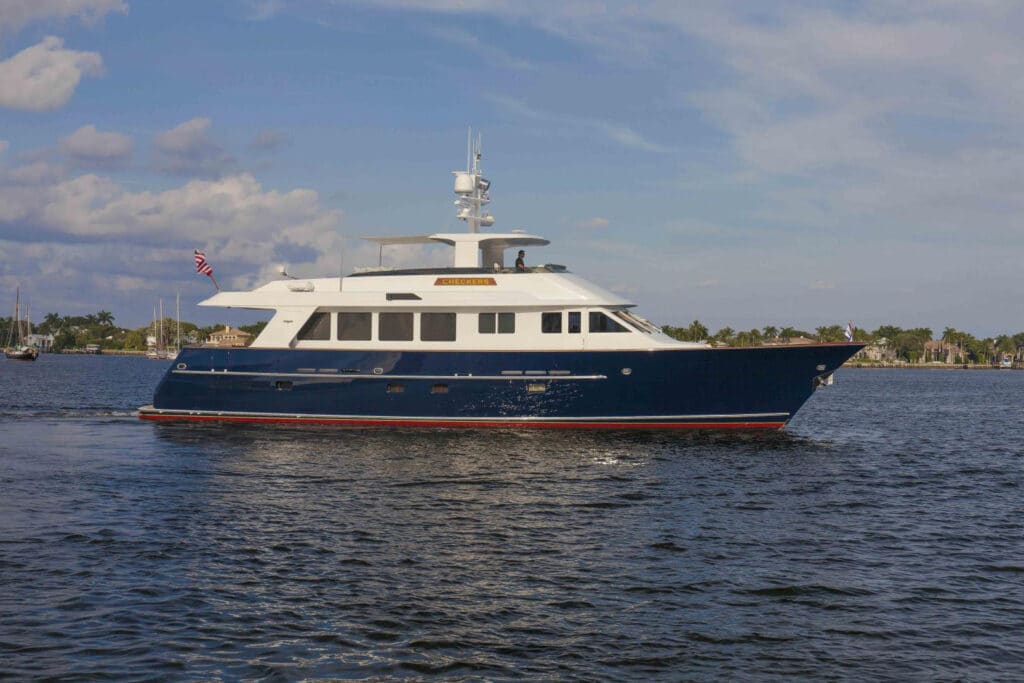
2001 Burger 85 – Checkers – Destin, Florida
Worth Avenue Yachts currently has the 85-foot Burger, Checkers , listed for sale with an asking price of $2.9 million. The 2001 build underwent an interior refit in 2023, including an updated Furuno glass-bridge navigation suite. The yacht has a three-stateroom, four-head layout, and has a main-deck day head.
Checkers can sleep six in its three staterooms, which includes a full-beam owners’ stateroom with an en suite head amidships. The owners’ stateroom features a king berth on centerline, a flat-screen TV at the foot of the bed, his-and-hers vanities, and walk-in closets aft to port and starboard.
Forward, the two guest staterooms as well as the captain’s cabin are accessible from the pilothouse stairway. The forwardmost stateroom has a centerline queen berth and en suite head. The starboard VIP stateroom also has a queen berth and en suite head. The captain’s cabin has upper and lower single berths and an en suite head.
- More: Brokerage , Burger Boat Company , Burger Yachts , Hargrave , Hargrave Custom Yachts , Hatteras , Hatteras Yachts , Ocean Alexander , Paragon , Sanlorenzo , Sanlorenzo Yachts , Viking , Viking Yachts , Yachts for Sale
- More Brokerage
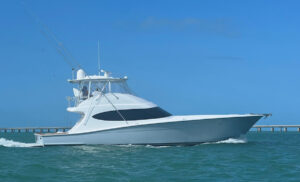
For Sale: 2021 Hatteras Yachts GT59 Convertible
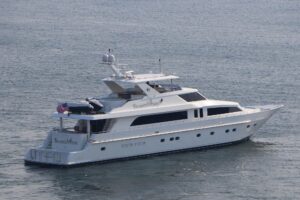
Price Reduction: 114-foot Hargrave “Brandi Wine”
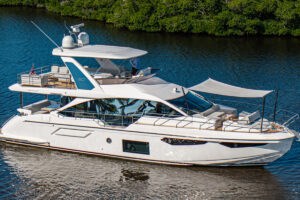
For Sale: 2020 Azimut Yachts 60 Fly
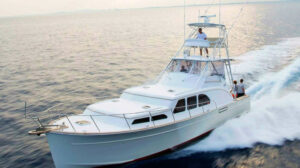
For Sale: Huckins 45 Sportfisherman
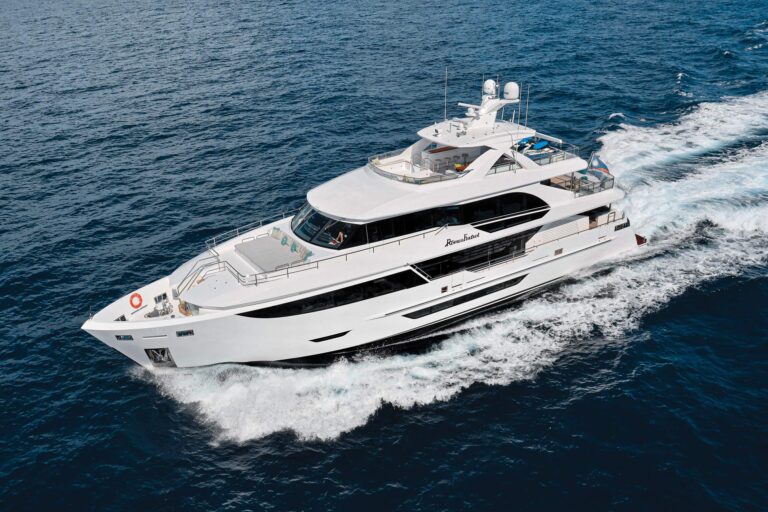
Hargrave 116 Reviewed
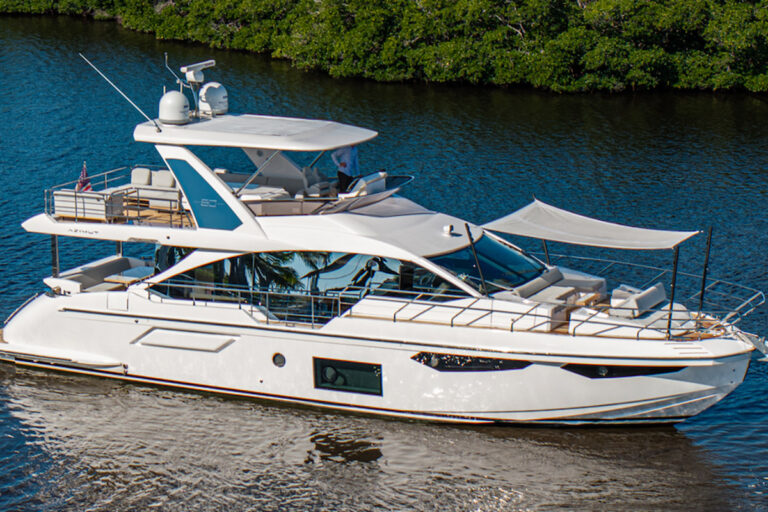
10 Used Express Cruisers Available Now

- Digital Edition
- Customer Service
- Privacy Policy
- Email Newsletters
- Cruising World
- Sailing World
- Salt Water Sportsman
- Sport Fishing
- Wakeboarding

Boating Basics Online is reader-supported. When you buy via our links, we may earn a commission at no cost to you. Learn more
How Big is a 100 Ton Boat? – Size, Capacity & Features
Written by J. Harvey / Fact checked by S. Numbers
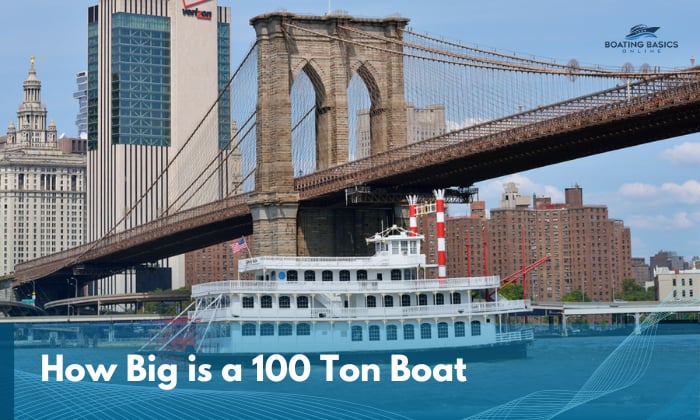
There are a load of reasons why folks ask, “How big is a 100-ton boat?” Since it’s about size, I will answer this question based on tonnage, which measures a boat’s overall size based on volume.
The size of a 100-ton vessel varies a lot, but it’s generally accepted that 65 feet is the minimum. Such vessels also typically have two stories or more. Remember that internal volume isn’t the sole indicator of size. The length overall (LOA), beam, and draft are needed to get the full picture.
Table of Contents
1. Size in terms of length, width, and height
2. capacity and features, 3. factors that influence the size of a boat, 4. comparison to other boat sizes, types of boats that can be classified as 100-ton boats, dimensions of a 100-ton boat.
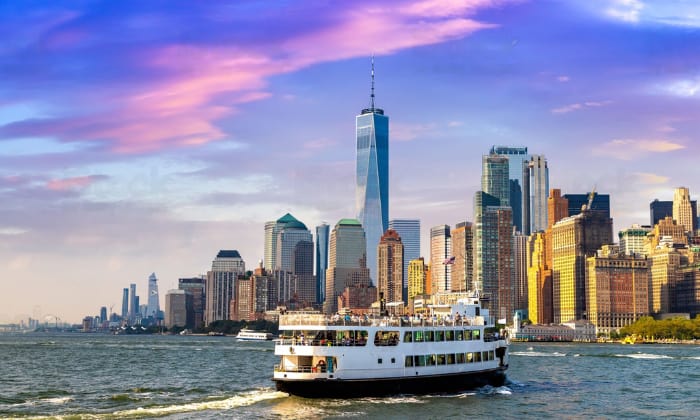
One thing is clear when pinpointing the dimensions of a 100-ton ship: it’s fairly large.
But ultimately, every ship has a different LOA, beam, draft, etc., which is why we often have to manually measure each vessel to truly know its exact dimensions and, in turn, size.
Either that or you need to consult the actual boat designers and manufacturers about the exact dimensions of the boat. We can’t use gross tonnage solely to get the boat’s perfect measurements, as it only refers to the ship’s overall internal volume.
To further prove that gross tonnage isn’t directly proportional to vessel size, just observe the world’s biggest watercraft by gross tonnage:
- As you can see, smaller vessels also have high gross tonnage values. That may mean they’re designed to maximize their cargo-carrying capacity.
- On the other hand, there are also larger ships with relatively lower gross tonnage. That could indicate its designers put more emphasis on internal volume rather than carrying capacity.
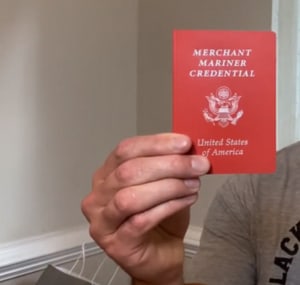
The USCG Master Licence does provide us with clues, though. Once you complete the 100-ton Master requirements, they explicitly state that you can now handle vessels of 65 feet and larger.
That is clearly the sole set parameter we can ever have in terms of tonnage with regard to size. It’s infinitely easier to calculate the gross tonnage using the boat’s dimensions which you have manually measured yourself or as indicated in the boat’s design plans.
After all, we can calculate gross tonnage by using the formula:
Gross Tonnage = L × W × H × Block Coefficient
Another formula we can follow is the more standard Gross Tonnage (GT) = K1V (with V being the volume of enclosed space on the ship and K being 0.2+0.02log10(V)), but it only applies to larger ships like cargo and passenger vessels.
And, even after we’ve calculated the exact gross tonnage, we can only ever estimate the size, which can still be larger or smaller, as proven by the link to the table shared above.
So, we’ll ultimately have to rely solely on the indicated length for a 100-ton vessel to get an idea of its size, especially if we don’t have a vessel to measure or the exact dimensions aren’t readily accessible. Moreover, length is arguably the most important parameter when classifying boats in the first place.
That said, if you insist on getting a rough estimate as to width and height, then know that a 100-ton boat can have beams 16 to 25 feet wide, whereas its height is at least 2 stories.

To get the capacity of a 100-ton boat, we need to consider the fact that 1 net ton is equal to 100 cubic feet. Assuming a 100 gross ton boat also has a net ton of 100, its cargo volume would therefore be 10,000 cubic feet. Its average displacement should be around 224,000 pounds.
Its features will inevitably vary as it can be any kind of large boat.
A yacht of this capacity may have more amenities, a more sizable dining or lounging area, and more rooms.
A typical tugboat will have rotating azimuth units, and they generally have powerful engines, too.
On the one hand, yachts will have wider viewing decks, more seats, restrooms, and other possible amenities.
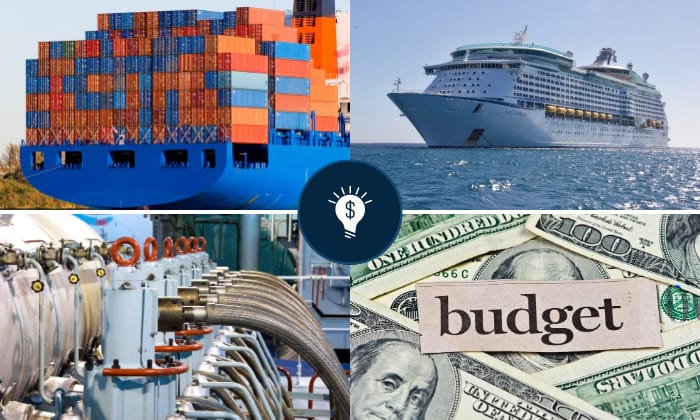
- Intended purpose
A kayak may be designed to be shorter to make it more maneuverable and portable, while a passenger ship will inevitably be larger to safely accommodate as many people, crew, and amenities as possible. You typically require a bigger boat when doing offshore fishing than inshore, too.
On the topic of shipping, containerships often optimize their carrying capacity. Usually, their size, capacity, and categorization are determined by their TEU (Twenty-foot Equivalent Unit) capacity. It’s termed as such because 1 TEU is equivalent to one 20-foot container.
Ultra-large container vessels have more than 14,500 TEU, which means, yes, they can fit 14,500 boxes of that specific size.
- Estimated length of the trip
Lengthy journeys tend to require more amenities and sturdier construction to withstand unexpected rough conditions. This results in a larger boat size than vessels intended for short trips.
- Engine power
Vessels designed to reach a higher speed typically require bulkier engines, which in turn will call for a larger boat to accommodate them.
- Other considerations
Manufacturers take note of boaters’ different storage options, budgets, dock spaces, and trailering options when deciding the sizes of boats they create.
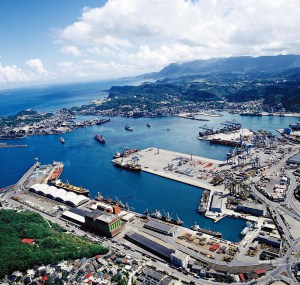
100-ton vessels are larger than most recreational boats, but may be smaller than your average commercial fishing vessel or cruise ship. The closest size would likely be that of a standard tugboat.
That already means a 100-ton boat is bigger than most dinghies, PWCs, kayaks, motorboats, and even sailboats.
Interestingly, it’s entirely possible to build a whopping 230-foot passenger vessel and keep it at or even below 100 gross tons with the right strategy (by, for example, knowing where to place fuel cells and utilizing tonnage openings).
So, yes, we shouldn’t fully consider it impossible for a 100-ton boat to rival even the world’s largest cruise ships and container ships in size. That should hammer the point that tonnage can only be connected to size up to a certain point.
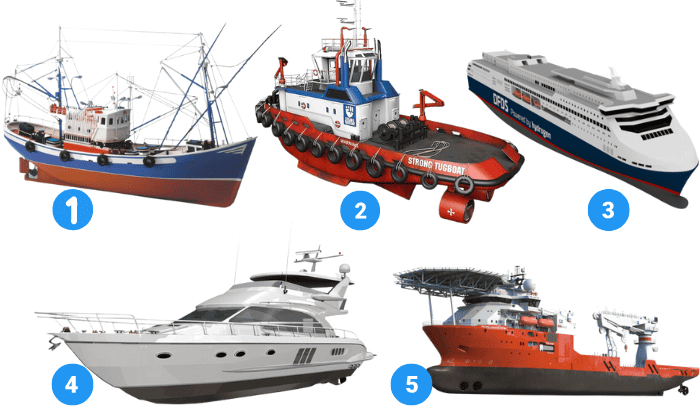
When pinpointing the types of boats that you can classify as 100-ton vessels, you need to be able to distinguish the ones that relate to weight more from those that connote capacity.
For example, the 100 Yacht by Sunseeker has been referred to as a 100-ton yacht because it displaces that much water, and not necessarily because it has 100 gross tons. Again, “tonnage” is different from displacement tons! We need to be looking at gross tonnage (GT) if size is the main concern.
If we’re going by size estimations and typical applications and purposes alone, below are the types of boats that can be classified as 100-ton vessels. Again, note that the length, width, and depth are rough estimates and not definitive figures.
The answer to “How big is a 100-ton boat?” will always be that it starts at 65 feet. From there, your design decisions will greatly affect the final shape and size of the vessel while still maintaining a gross tonnage of 100.
There’s a lot of confusion when it comes to this topic, I admit. This only underscores the importance of widening your maritime knowledge further while honing your seamanship at the same time.

“My intention from the first day establishing Boating Basics Online is to provide as much help as possible for boaters who want to experience a first safe and convenient trip. So feel free to join us and share your beautiful journeys to the sea!”
30% OFF SITEWIDE! Use Code: MLS30
- Get Started
- OUPV/Six-Pack Captain’s License
- 25/50 or 100-Ton Master Captain’s License
- License Endorsements
- All USCG Captain's License Courses
- FCC MROP – Marine Radio Operator Permit
- FCC Exam Package Deals
- FCC Individual Exams
- FCC Practice Test Books
- Captain's License Guides
- FCC License Guides
- Why Our Students Succeed
- MLS Learning Tools
Online Testing
- American Hero Fund (ID.me)
- Licensing Guides
- How To Videos
- Help Center
- 24/7 Live Technical Support
- Mariners Life
- Mariners Gear
Add description, images, menus and links to your mega menu
A column with no settings can be used as a spacer
Link to your collections, sales and even external links
Add up to five columns
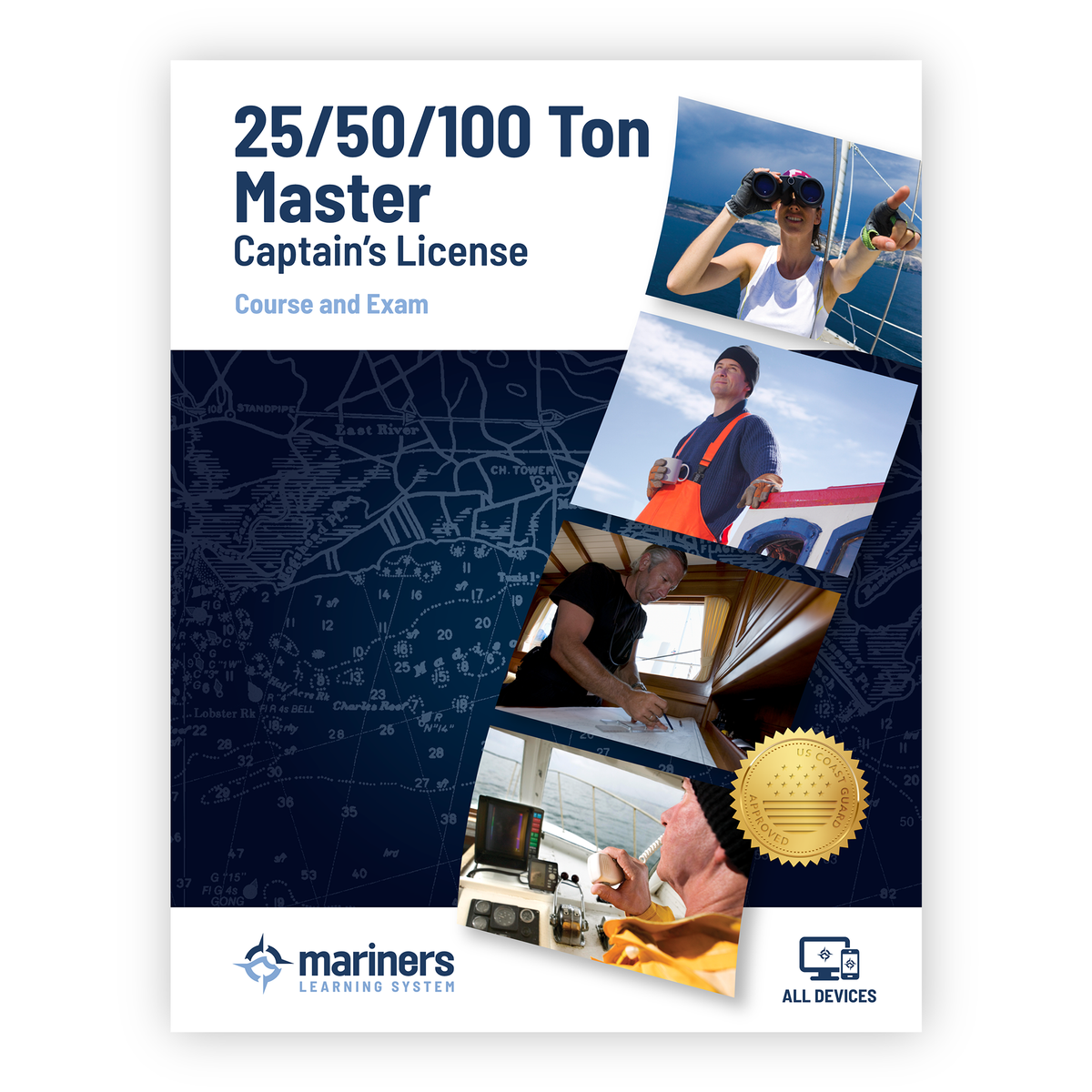
25/50 or 100-Ton Master Captain’s License - Online Course and Exam
50% off additional packages when you buy 2 or more of the SAME course ...

MM-SEAS PRO Membership (2 Years) - $198 Value Included FREE!
Notify me when this product is available:
Charting Your Captaincy: A Smooth Voyage to Licensing! The 25/50 or 100-Ton Master Captain's License is the highest level license that you can acquire. This master boat captain's license allows you to operate inspected vessels (7 passengers or more – like a water taxi or dive boat) or uninspected vessels. Depending on your experience, it will be issued as a 25, 50, or 100-ton. The Coast Guard does not require that you advance through the different licenses one at a time. So, if you qualify, you can go straight to a Master's level as your first license!
MM-SEAS PRO gives you unlimited access to US Coast Guard Licensing experts via phone or video. It's like having a specialist by your side when you are ready to apply for your license. MM-SEAS Licensing Software makes documenting sea time, understanding license requirements, and keeping track of expirations easy through interactive checklists.
The Towing Endorsement is required if you will be engaged in towing a disabled vessel for payment, such as the activities of a Sea Tow or TowBoatU.S. operator.
An additional Sailing Endorsement is necessary for carrying seven or more passengers "under sail" on inspected sailing vessels.
Our 25/50 or 100-Ton Master Captain's License course includes 12 months of access to our all-inclusive online course, final exam, and a Long Island Sound Training Chart and Official Test Packet for the Chart Plotting exam, all neatly packaged in an MLS Carrying Kit.
What's Included
- Pass Guarantee - When you do the work, we'll ensure the result
- Enrollment Period - Enjoy unlimited access to your course for 12 months
- Online Final Exam - Available Any Day, Any Time
- MM-SEAS PRO Membership (2 years) - Simplifies the application process
- MLS iVideo Training Series - Watch, listen, and learn at your convenience
- MLS eBook Training Series - Carry your training materials with you on any device
- MLS Audio - Learn while on the go or during other activities
- MLS Mobile - Easily access course materials online or offline
- Full-sized Long Island Sound Training Chart – 12354TR
- Official Test Packet for your original attempt at the Chart Plotting final exam
- Red MLS Carrying Bag
The Mariners Advantage
- Unmatched Excellence - US Coast Guard Approved Course Materials
- Decades of Expertise - Proven Curriculum and Results
- Empowering Boaters - Dynamic and Engaging Courseware
- Flexible Learning - Tailored to Your Schedule
- Day or Night, We've Got You Covered - 24/7 Live Technical Support
Physical materials are available for free shipping via USPS Priority Mail. Alternative shipping options are available at checkout for an additional cost.
IMPORTANT NOTE: You will need a set of parallels and dividers for the Chart Plotting module and final exam. These can be purchased from our website .
License Requirements
The USCG Master License allows the holder to operate inspected vessels as well as uninspected vessels. Any vessel that is certified (authorized) by the USCG to carry more than 6 paying passengers plus crew must have a Boat Captain who holds a 25/50/100 Ton Master license. Ferry boats, harbor tours boats, whale watch boats are examples of inspected vessels.
Types of Master's Licenses
There are 3 different Master Licenses a mariner may qualify for such as the Master Inland or Master Near Coastal. Both the amount of sea service time and the size vessels you have been on will influence the license you are eligible for. Master licenses are tonnage rated at 25 GT (gross tons), 50 GT, or 100 GT.
You are not required to advance through the different licenses one at a time. If you meet the USCG requirements for the master 100GT Near Coastal, you'll get that license as your first license.
The level you receive is based on your documented boating experience; our online course and exam will remain the same:
Master Inland
- 360 days underway experience since age 16; 90 of those 360 days in the last 3 years.
Master Inland/OUPV Near Coastal
- 360 days underway experience since age 16; 90 of those 360 days in the last 3 years; 90 of those 360 days outside the boundary lines.
Master Near Coastal
- 720 days underway experience since age 16; 90 of those 720 days in the last 3 years; 360 of those 720 days outside the boundary lines.
Additional Requirements
- Obtain a Transportation Workers Identification Credential (TWIC Card)
- Minimum age: 19 years old (U.S. Citizenship Required)
- Pass a Physical Examination
- Pass a DOT Drug Test unless enrolled in a USCG-approved random drug testing program for the last 185 days, and with no failure or refusal to participate in a chemical test for dangerous drugs.
- Adult CPR/Basic First Aid training
- Completion of Mariners Learning System™ USCG-approved 25/50/100 Ton Master's online course and final exam
- Complete a USCG Original License Application Package
No testing at the USCG Regional Exam Centers is necessary. All testing is done ONLINE through the MLS account.
Upon successful completion of the Mariners Learning System™ online 25/50/100 Ton Master's course, the student studies the materials and takes our proctored exam online. Once the student passes our multiple-choice exam, they will receive a Mariners Learning System™ certificate recognized by the United States Coast Guard . Simply submit, within one year, the original certificate along with the application package and applicable fees to the USCG Regional Exam Center. Upon their approval of your package, they will mail the license.
Mariners Learning System™ offers Coast Guard-approved remote testing for those looking to become a licensed Captain. Our eLearning system makes it easy to take your Captain’s Licensing course and final proctored exam online when it’s convenient for you. Any Day. Any Time. Any Place.
Grading Process
Once the student completes the course quizzes and online module exam(s), they can test on-demand online for their final proctored exam with Mariners Learning System™. No testing at the Coast Guard Regional Exam Centers .
The 25/50 or 100-Ton Master's is a 2-part final exam with one part containing four module final exam and one part containing a single module final exam with the following grading standards:
OUPV/Six-Pack
Chart Plotting
- Total Multiple-Choice Questions = 10
- Minimum Passing Percentage = 90%
- Total Questions Wrong and Still Pass = 1
Navigation General
- Total Multiple-Choice Questions = 50
- Minimum Passing Percentage = 70%
- Total Questions Wrong and Still Pass = 15
Deck General/Safety
Rules of the Road
- Total Questions Wrong and Still Pass = 5
Master's Upgrade
- Total Multiple-Choice Questions = 70
- Total Questions Wrong and Still Pass = 21
The student must pass all modules to receive a certification of completion. If a student fails one or more modules, they will be able to retest after the previous exams are reviewed, and reattempts unlocked. This re-examination must occur within 3 months of the original testing attempt or prior to the course expiration date, whichever date comes first. Those who do not pass an exam module after three attempts must retake the entire online course and retest all modules online prior to the year course expiration date and wait a period of 45 days to retest.
Exam Requirements
Students must have a high-speed Internet connection and an up-to-date desktop or laptop with a webcam and microphone. Also, students must have the ability to download software through the MLS account. This is required to access the exam.
When testing online for the proctored exam, students will be required to display a legible photocopy of their Coast Guard recognized photo identification to the computer screen. The student will be required to complete the course evaluation form prior to testing. These copies will be retained for our records per USCG requirements.
The list of acceptable forms of photo identification includes:
- U.S. driver’s license
- U.S. Passport
- Foreign Passport
- Law enforcement credential, with photograph of the applicant, issued by Federal, State, or local government
- U.S. Military identification card
- Official identification card issued by a State, or local government
- Official identification card issued by the Federal Government
- Merchant Marine Document issued after February 3, 2003
IMPORTANT NOTE: It is the student’s responsibility to provide a clear and legible copy of identification. If an ID is not provided and/or MLS is unable to read the copy, it will result in a failure. No exceptions per Coast Guard policy. No other forms of identification will be accepted.
All Devices
Flexible learning, pass guarantee, coast guard-approved, 24/7 support, other mariners products you may enjoy, why choose our course.
- Learning Anytime, Anywhere: Watch, listen, and learn at your convenience
- Engagement Boosting Videos: Our vibrant and dynamic visuals are designed to captivate attention, ensuring heightened engagement throughout your course
- Simplified Explanation: Animated videos allow for simplified explanations of difficult topics, breaking down information into digestible chunks
Watch a Video Clip
- Portable Learning : Carry your training materials with you on any device, making learning flexible and convenient
- Full-Color Visuals : Enjoy engaging and vibrant visuals that enhance comprehension and retention
- Detailed PDFs : Download and print detailed PDFs for easy reference and offline study, ensuring accessibility and flexibility in learning formats
- Environmentally Friendly : Reduce paper waste and contribute to a sustainable future with our eco-friendly digital format
Read an Excerpt
- Flexible Learning : Incorporating in-depth audio lectures offers a dynamic and flexible learning experience, empowering learners to absorb course material effectively while accommodating their individual preferences and lifestyles
- Enhanced Comprehension : With audio reinforcement, improve reading comprehension and engage in multi-modal learning for a deeper understanding of course material
- Efficient Time Use : Learn while on the go or during other activities, maximizing productivity and managing time effectively
Listen to an Audio Snippet
- Seamless Learning Experience : Enjoy a fluid and intuitive learning environment by transitioning between desktop and mobile
- Convenient Accessibility : Empower learners to continue their educational journey anytime, anywhere, from any device
- Offline Learning : Break free from connectivity constraints by accessing course materials offline, perfect for commutes or areas with unstable Internets - progress will sync up when re-connected
- Download from Apple or Google Play : Easily download the app from your preferred app store, ensuring compatibility with your device's operating system
200,000+ Students Can’t Be Wrong!
Over the last two decades, our courses continue to evolve and improve. Along with our expert, 24/7 technical support team and a 98.7% pass rate, we guarantee you’ll be happy with your Mariners experience.
"I tested tonight and had great success. Thank you for all your guidance through this experience. The staff at Mariners couldn't be more professional, patient, and prompt. I'm looking forward to applying what I've learned on the water. Thank you, Mariners Learning System."
Ready to Get Started?
Shop Courses or Talk to a Licensing Specialist
Marine Travelift is taking customization even further with our newest revolutionary boat hoist option — Variable Width. See Variable Width in Action Here >
- Mid-Atlantic
- News & Blog
- (920) 743-6202
- BFMII Boat Hoist 25-100 Ton
- C-Series Boat Hoist 150-1500 Ton
- Marine Forklift
- Hydraulic Transporter
- Customer Care
25-100 Ton Boat Hoists
Customized to fit your needs
Customize widths, heights, and more to fit your marina’s exact specifications. View Available Options >
25-100 Ton Boat Hoists Overview
Whether you are lifting sailboats, yachts, or every type of boat in between – Marine Travelift boat hoists are the most trusted in the industry.
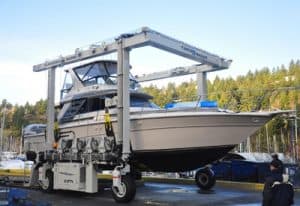
25 ton boat hoist
55,000 lbs. / 25,000 kg
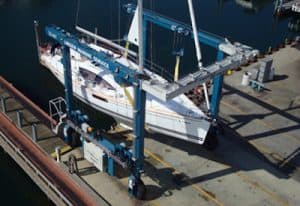
35 ton boat hoist
77,000 lbs. / 35,000 kg
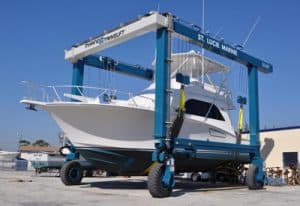
50 ton boat hoist
110,000 lbs. / 50,000 kg
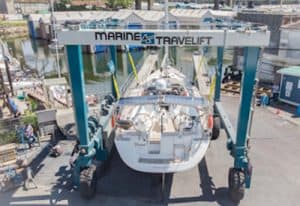
75 ton boat hoist
165,000 lbs. / 75,000 kg
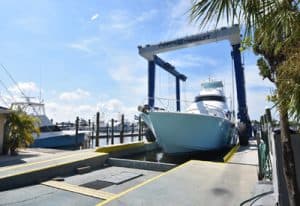
85 ton boat hoist
187,000 lbs. / 85,000 kg
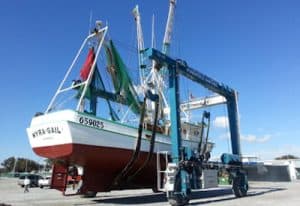
100 ton boat hoist
220,000 lbs. / 100,000 kg
Boat Hoist Weight Capacity
25 metric tons – 100 metric tons | 55,000 lbs. – 220,000 lbs. | 25,000 kg – 100,000 kg
- BFMII boat hoists are capable of hauling vessels approximately 25 ft. (7.6 m) - 100 ft. (30 m) in length.
- Designed to lift a variety of vessels including: sailboats, powerboats, police and Coast Guard patrol vessels, catamarans, commercial fishing boats, and more.
- The ideal lifting solution for yacht clubs, saltwater and freshwater marinas, sailboat clubs, and more.
Download Brochure
25-100 Ton Boat Hoists Features
- Remote Diagnostics
Our remote diagnostics allow free support around the globe. Experienced factory technicians are able to perform the diagnosis, identify a faulty part and/or modify program parameters without having to make a trip to your site.
- Sling Adjust
The BFMII models feature standard powered sling adjust to maximize capacity and optimize the diversity of vessels you can lift. The operator has full control of this function and can adjust each sling's position to improve load balance or to avoid stabilizers and other sensitive elements on the hull.
- Formed Steel Structure
Reduces fatigue and extends the life of your machine with a beam-formed structure. Rounded edges don't allow stress to concentrate in the corners providing a more durable structure for more heavy-duty work.
- PPG Siloxane Paint
Increase life and reduce corrosion with this 2-step PPG Paint process. A zinc-enriched epoxy primer and polysiloxane topcoat provide superior performance proven in the most difficult marine environments.
- Intelligent Readout System
The intelligent readout provides multiple outputs including general engine performance, real-time measurements of machine operations, oil level/temperature and pump pressures. It also allows for performance troubleshooting and complete systematic control.
- Industrial Tires
Our industrial tires provide the highest level of durability with an abrasion-resistant additive to withstand different style terrain.
- Greaseless Pivot Trunnion
The pivot trunnion allows the machine to articulate over uneven ground without adding stress to the structure. The use of a greaseless, wear-resistant bushing means less maintenance and eliminates the chance of grease falling on a boat.
- Operator Cab
Operator cabs are standard on all Marine Travel BFMII boat hoists. The controls are direct to valve and hydraulically control all functions as well as act as a backup to the radio remote option.
- Chine & Keel Pads
Built to protect, sustain and withstand various temperatures and climates, further extending the life of your slings. Made with thick reinforced rubber or vinyl to protect the sling from sharp edges and the additional weight helps to sink the slings and keep them from rolling when a boat floats in.
- Hydraulic Fluid Leak Protection
Stainless steel tubing, O-Ring face seal hydraulic fittings, and cordura hose covers are all used for added protection against hydraulic leaks to keep fluid off boats and out of the water. Our 2205 stainless tubing resists corrosion in the harshest marine environments and cordura hose coverings prevent the elements from prematurely deteriorating the hoses.
" * " indicates required fields
Fill out form below to request product specs:
- Customizable Height & Width
Marine Travelift hoists are built around the needs of our customers. Customize the height and width that best serves your yard.
- Wireless Remote Control with LCD Display
All controls are fully proportional and the use of the remote increases visibility of the boat, launching piers, and surrounding area. The wireless remote works to improve operational safety and maneuverability while displaying important data including load gauges, engine and machine info.
- Sailboat Top Beam Extension
By adding this extension, long sailboats, motor yachts, or sport fishing vessels can be lifted in far less time and with greater efficiency. The additional clearance this option provides can eliminate the need to adjust a vessel’s rigging.
- All-Wheel Electronic Steering
Our patented All-Wheel Electronic Steering provides the fastest speeds & safety features in the industry and is capable of functioning under full load. With 5 steering modes, this system maximizes the versatility and precision of the machine in confined yard spaces.
- 2 Speed Hoist
Increase lifting speed for more efficiency when your machine is in high demand or greatly fluctuating tides.
- Increased Gradeability
Maximize your yard space with increased gradeability that allow your boat hoist to move better over steeper inclines, and navigate uneven terrain or sloped surfaces.
Customize lifting abilities and sling configurations with the addition of spreader bars, giving you the ability to lift a wider variety of hull designs.
Our machines are designed for interchangeability of power units. If you are particular about using a certain brand in your machine, let us know.
- LED Work & Drive Lights
Offered in options of 8 or 12, these sealed-type LED lights illuminate work and drive areas when working in low visibility conditions. Additional custom configurations are available.
- Variable Width
Our revolutionary Variable Width design allows marinas and shipyards to safely and efficiently optimize space for service and storage. Creating opportunities to block vessels closer together in order to access space previously unavailable because of overall width dimensions on a standard boat hoist.
- CE Compliance
Marine Travelift machines meet and exceed all standards to ensure safety and compliance for our global partners.
These telescopic-powered cranes are controlled separately and mounted to the upper structure to help with removing masts, small engines, and loading on and off other accessories.
See the 25-100 Ton Boat Hoists in Action
Countless Years of Tradition. Constant Innovation.
With over sixty years of experience in the industry, everyone on the Marine Travelift team takes pride in building the equipment you trust. From our in-house engineers to our expert customer care technicians, we work with you to build the exact machine you need, and provide the service you expect — to keep your business running.
Related Industrial Boat Handling Equipment
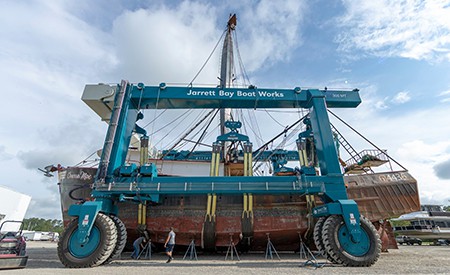
150-1500 Ton Boat Hoists
The C-Series from Marine Travelift is available for the larger lifting needs your shipyard demands, with capacities from 150-1,500 metric tons. These are the ideal lifting solution for everything from cargo ships, to tugs, to superyachts and beyond.
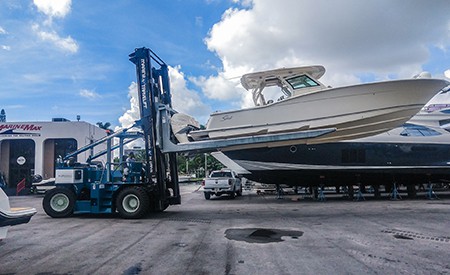
Marine Forklifts
Our Hydro M_Drive forklifts are available in a variety of capacities, wheelbases, and mast heights to work within your existing drystack facility. Choose from side or center cab configurations and innovative options to maximize operator comfort and improve marina efficiency.
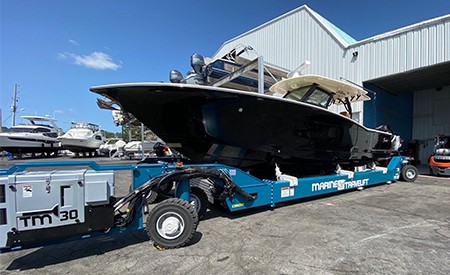
Hydraulic Transporters
The perfect boat handling and storage addition for your yard. Marine Travelift transporters are self-propelled and designed to be used with our mobile boat hoists to maximize space in your yard and buildings.
Latest Updates
Wednesday, May 3, 2023
Marine Travelift Announces Variable Width Option for Mobile Boat Hoists
View Press Release >
Wednesday, April 12, 2023
Marine Travelift Delivers New Capacity Forklift Designed for Growing Center Console Market
Wednesday, October 12, 2022
Stevens Towing Co. To Transform Marine Services in Southeastern US with Marine Travelift 820C
Monday, August 1, 2022
Three Generations: Marine Travelift and Bock Marine Family
Thursday, May 26, 2022
MBK Marine Industries Chooses Marine Travelift Mobile Boat Hoist for Shipyard Development Project
Monday, January 17, 2022
Bayliss Boatworks Increases Lifting Capacity with Marine Travelift 150TG
Wednesday, October 11, 2023
The Boat House – Chicago Upgrades Marina Forklift Fleet with New Marine Travelift M2300H Hydro M_Drive
Thursday, September 22, 2022
Marine Travelift Appoints Minten Executive Vice President
Want the latest Marine Travelift updates to your inbox?
Sign up for our email newsletter.
Privacy Overview

IMAGES
VIDEO
COMMENTS
Add to cart. Session MASTER 100 TONS 12/02/2024 San Diego, CA. Date Dec 02 2024 to Dec 13 2024. Location CA, San Diego. Price 1575. Deposit Option $ 100.00 per item. Pay Deposit Full Amount. Add to cart. Get your Captain's License for OUPV up to 100 Ton with our USCG-Approved Master 100 Tons course offered in CA, HI, VA, and WA.
How big is a 25/50/100 Ton vessel? These are generalizations but are useful guides: A 25-ton vessel can be 40-65 feet, depending on how it's built. A 50-ton vessel can be 50-70 feet depending on the type of vessel and material it is built with. A 100-ton vessel can be 65 feet or more depending on its construction and commercial uses.
A 50-ton vessel can be 50-70 feet, depending on the type and material it is built with. A 100-ton boat or vessel can be 65 feet or more, depending on its construction and commercial uses. ... To upgrade from a 50 to 100-ton Master Captain's License, you need to be able to document the following sea service requirements: 180 days (25%) ...
Pass a physical and drug test. Hold a valid Adult CPR and First Aid card. Obtain a TWIC card. Complete a Coast Guard-approved 25/50 or 100-ton captain's license course. The necessary boating experience required for the 25-ton, 50-ton, and 100-ton USCG license requirements vary. Once the student passes our multiple-choice exam, they will receive ...
A 100-ton boat is 65 feet long and features an average of 2 stories. It weighs around 55 spans and has a total length of 165.6 feet. This is more than the length of a football field and weighs as much as 4 Boeing 747 planes! In this article, you will discover everything you need to know about buying a 100-ton boat, including what factors affect ...
Charting Your Captaincy: A Smooth Voyage to Licensing! The 25/50 or 100-Ton Master Captain's License is the highest level license that you can acquire. This master boat captain's license allows you to operate inspected vessels (7 passengers or more - like a water taxi or dive boat) or uninspected vessels. Depending on your experience, it will be issued as a 25, 50, or 100-ton.
Course Description. Captains Licenses - USCG. Course #101 is the Master or Mate of Vessels of up to 100 gross tons. Course # 104 is the Operator of Uninspected Passenger Vessel (OUPV - 6 pack) Level. MPT's Captains License classes are USCG Approved, NO TEST AT THE USCG. This course is available for both levels.
Minimum age: 19 years old. U.S. Citizenship. Pass a physical examination. Pass a DOT drug test unless enrolled in a USCG-approved random drug program for the last 185 days, and with no failure or refusal to participate in a chemical test for dangerous drugs. Adult CPR/Basic First Aid training.
Get Your Professional Captains License For Vessels Ranging from 25-100 Gross Tons. The US Coast Guard Master 100 Gross Tons License allows its holder to captain any vessel up to 100 tons, regardless of whether or not it is inspected. Successful completion of our Master 100 GT course and exam satisfies all 100 Ton educational requirements and ...
100 Ton Master Inland/Near Coastal: This is the course for you if you're working as a deckhand, looking to make your way into the wheelhouse, or you own your own vessel and are interested in operating private charters. Our 100 Ton License course is 80 hours, runs two weeks (Monday-Friday 8 a.m. to 5 p.m.), and covers: Rules of the road.
Must be at least 19 years old. Must be able to document 360 days of experience on a vessel. (See: What Counts as Sea Service) 90 days of sea service must be within the last 3 years of when you apply. The tonnage of the license (25 Ton, 50 Ton, or 100 Ton) that you get, is determined by your experience. See USCG checklist in the paragraph above ...
To start, there are 25, 50, and 100-ton licenses. The 25-ton Master license qualifies you to captain vessels up to 25 tons. The 50-ton lets you captain 50-ton vessels. And the 100-ton lets you captain 100-ton vessels. The license you qualify for depends on your documented sea days and the tonnage of the vessels you were serving on.
The Dimensions of a 100-Ton Boat. To give you a rough idea, a 100-ton boat could range from 65 to 85 feet long. The width, also known as the beam, can vary between 16 to 25 feet, depending on the boat's design and purpose. The height, or draft, is the distance between the waterline and the bottom of the hull. The draft can span anywhere from 5 ...
For a master captain's license: Master 25/50/100 Ton (you need to correctly answer 70% of 70 questions) You can find up-to-date captain's license practice test questions, released directly from the U.S. Coast Guard, at USCGQ.com. 3. Additional requirements. Pass a physical; Pass a drug test; Obtain a CPR and basic first aid card
On a very rough order of magnitude, a 100 Ton powerboat would be about 80 feet long and a 100 Ton sailboat would be about 100 feet long. The tonnage rating is a not to exceed limitation. One need not necessarily serve on a 50 ton or 100 ton vessel to earn the equivalent tonnage rating (see the table below for specifics on that).
Inland Masters 25/50/100 Ton. 360 day underway on navigable waters. 90 days of the 360 must be within the last 3 years. Near Coastal Masters 25/50/100 Ton. 720 days underway. At least 360 days must be upon near coastal or ocean waters. At least 90 days must be within the last 3 years. * A "day" is defined as 4 or more hours away from the dock.
Winched into a custom built exhibition space, Susan Li goes on-board the Massive Sunseeeker Super yacht at the London Boat Show.Subscribe to CNBC Internation...
Over the last 10 years we have collected over 20,000 questions released directly by the United States Coast Guard. These are the same questions you will encounter in your USCG Licensing Exam. Those looking for a comprehensive 100 Ton Masters License Practice Test will especially appreciate the depth of questions available.
Ocean Alexander 100 Motoryacht. Search used yachts for sale worldwide from 91 to 100 feet. We offer a wide range of used yachts, including explorer yachts, luxury cruisers, motor yachts, pilothouse yachts, sailing yachts and more. Contact our yacht brokers for assistance.
We review the top 10 yachts over 80 for sale and available on the yacht brokerage market today. ... C-32 diesel engines work with the yacht's planing hull form (with 13.5-degree transom deadrise) to help propel this 100-ton motoryacht to a 20-knot top hop and a 14-knot cruise speed. The engines have just over 2,000 hours on them.
To get the capacity of a 100-ton boat, we need to consider the fact that 1 net ton is equal to 100 cubic feet. Assuming a 100 gross ton boat also has a net ton of 100, its cargo volume would therefore be 10,000 cubic feet. Its average displacement should be around 224,000 pounds. Its features will inevitably vary as it can be any kind of large ...
The 25/50 or 100-Ton Master Captain's License is the highest level license that you can acquire. This master boat captain's license allows you to operate inspected vessels (7 passengers or more - like a water taxi or dive boat) or uninspected vessels. Depending on your experience, it will be issued as a 25, 50, or 100-ton. The Coast Guard does not require that you advance through the ...
Boat Captain - Marine Boat Captain - 100 Ton - Sacramento. City Cruises - California. Sacramento, CA. $31 - $35 an hour. Part-time. 8 hour shift +4. Easily apply. This person will be adaptable, dynamic, and embody City Experiences' RESPECT Service System.
Details. BFMII boat hoists are capable of hauling vessels approximately 25 ft. (7.6 m) - 100 ft. (30 m) in length. Designed to lift a variety of vessels including: sailboats, powerboats, police and Coast Guard patrol vessels, catamarans, commercial fishing boats, and more. The ideal lifting solution for yacht clubs, saltwater and freshwater ...
Back in 2022, the company hoisted Lürssen's 238-foot Coral Ocean, weighing around 1,400 tons, making it the largest yacht ever to be hauled using strap lift technology. This impressive feat took place at Derecktor Shipyards' facility in Fort Pierce, Florida. The yard boasts a 1,600-ton lift, which is the world's largest mobile yacht lift .